|
It’s been a hot minute since my last trip to Belize, filming an episode of my TV series Word Travels. Back then, we hit the jungle, some Mayan ruins, the wetlands, and a Mennonite community for good measure (you can stream that Belize episode free on Tubi). Now I finally have the opportunity to see the beaches and coral reefs that I missed on the first trip, which concludes with the line: “If you do everything the first time, there’s less reason to return.” Swapping out a TV crew for my go-go-go daughter - a razor sharped chip off the old block - we’re following up our jungle adventure to Costa Rica with another foray into Central America. Much like Costa Rica, Belize is smashing things on the eco-tourism front, but Costa Rica doesn’t have Mayan ruins or an English-speaking population, somehow sheltered from the general mayhem found in its neighbours Guatemala and Honduras. Focusing on the beach and the world’s second largest barrier reef, my daughter showed impressive vim taking on the PADI Junior Open Water Certification, working hard on her e-learning, confined pools dives in Vancouver, and the four challenging ocean dives on the reef. You can read more about that journey in my Canadian Geographic column. What I didn’t mention was that singular moment – the bucket list moment – where all the travel and work and adventure coalesced. We were diving together through a canyon reef, which admittedly wasn’t the most spectacular dive in terms of marine life, but allowed us to explore a unique eco-system, and the weird sensation of scuba diving, together. Just another unforgettable moment in a lifetime of many. Wish there was a TV crew to capture it! Last night I discovered the word: Zugzwang. What the hell kind of a word is Zugzwang? A real English word, co-opted from German as it turns out. Definition: a situation in which the obligation to make a move in one's turn is a serious, often decisive, disadvantage. One day, I’m going to use that word in conversation, and I can’t wait. There must be a lot of Austrians Googling: “Where to find a great schnitzel in Canada?” because my column about skiing in the fantastic Silverstar Ski Resort, and taking my Austrian brother-in-law to Gerni's Farmhouse outside of Vernon, totally blew up. Gerni refers to the late Gernot Langes-Swarovski, founder of the Swarovski crystal empire, which owns the glitzy spa resort Sparkling Hill in the BC interior. Gerni liked his authentic Austrian food served in an authentic Austrian environment, so had a 16th century Austrian farmhouse dismantled and shipped over to his resort British Columbia. The menu and setting would make any Austrian traveller tear up with joy. Once they’ve settled down, they can explain to me what’s in a Almdudler. It’s a popular Austrian non-alcoholic soda, of a sort, that tasted like the innocence of childhood for no reason I can possibly explain. I also took the opportunity to do my best sack of potato impression while flying down an ice chute at 94 km/hr. A lot of people asked me why I felt compelled to do the public skeleton at the Whistler Bobsleigh Centre, and the answer is: because tourists actually do this, and it is undoubtably something unique, memorable, attainable and hilarious. Therefore: something to add to the bucket list. Jon Montgomery, who won skeleton gold in the skeleton at the 2010 Olympics, was a great sport for his quotes in my column, which pretty much captures the all-round absurdity of flying down a “frozen toilet chute.” Unseasonably warm weather totally zugzwanged me when it came to a long-planned multi-day snowmobile trip in Algonquin Provincial Park. We were watching snow reports during the worst winter season on record, and the trip was ultimately pulled just days before I was set to fly out to Ontario. A bummer in every way, because snowmobiling without snow is no fun at all. Climate change is going to wreak havoc on more and more travel plans, so purchasing a little travel insurance to fully recoup any upcoming flights in the case of unexpected chaos is no longer just another airline cash-grab, it’s a necessity. Finally, the second edition of The Great Western Canada Bucket List arrived at my doorstep and it looks fantastic. Packed with inspiration, it’s slim enough to gift to those travelling with carry-ons, and my wish is for it to land on the radar of anyone greeting newcomers to BC and Alberta. As you can tell on the companion site, there’s so much to explore and discover across a landscape that is both unique and diverse. The book will officially launch nationwide in May 14, look for it wherever you find your reading material.
0 Comments
The Scenic Eclipse’s owner wanted non-billionaire friends to experience the billionaire luxury yacht experience. Count yourself in. 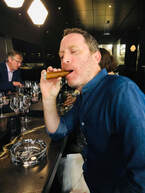 The chef presents a burrito cigar, filled with chicken, salsa and guacamole, resting on a thick glass ashtray you haven’t seen since 1978. Next up is a slice of marbled Jack’s Creek Australian steak sizzling on hot pebbles, blow-torched to order, medium rare. Now the glazed fois gras lollipop, served on candy floss which is melted with chili-infused vinegar spray. There will be ten of these courses, each accompanied by a crystal glass of fine wine from every major wine-producing region. Am I in one of Vancouver’s new Michelin-star fine dining restaurants? No, I’m a passenger on the world’s most luxurious passenger yacht cruising off the Pacific coast of South America, and this is not even the most memorable meal of the week. In the wake of the pandemic, cruise ships appear to be sailing in two different directions. There are the massive floating resorts appealing to the masses (MSC’s new Wonder of the Seas can accommodate a record 6988 passengers). Then there are the small, extravagant vessels that promise comfort and decadence beyond imagination. With just 114 suites housing 228 guests across five decks, the 168-metre long Scenic Eclipse sails firmly into this harbour, billed as The World’s First Discovery Yacht. This means it can safely navigate Antarctica and the Northwest Passage just as easily as it can cruise the Mediterranean or South Pacific. It also means that each extra-large, sound-insulated cabin has its own butler, electronically customizable beds, Dyson hair-dryers, all-inclusive mini-bar, balcony, gourmet coffee maker, and oversized rain shower bathroom. -Boarding the Eclipse in Lima on a 9-day sailing to the Chilean capital of Santiago, the lush expansive lounge, beaming staff and towering bar all look impeccable. Doting, attentive and highly trained international crew outnumber guests three to one. The Eclipse was inspired by the Australian owner’s desire to offer his non-billionaire friends the billionaire luxury yacht experience. Forget the tiresome nickel and dime cruise dance, because everything is included: all premium alcohol, wifi, offshore excursions, all nine dining options, entertainment, kayaking, paddle-boarding, even your crew and driver tips. You do however have to pay to ride the two on-board helicopters and comfy submarine, along with expansive spa services that include a range of massage, hair styling and nail services. Considering the pricey rack rates for this bucket list cruise experience, those costs might feel like a drop in the ocean. 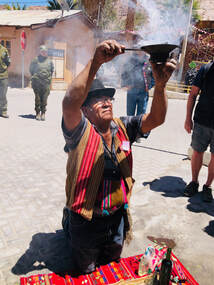 Receiving a blessing in Codpa Receiving a blessing in Codpa “Honey, there’s a sperm whale chilling off our balcony!” My wife is enjoying her long hot shower (the ship desalinates up to 200 tonnes of seawater every day) and misses the unexpected wildlife moment. Gathered for their daily wildlife briefing in the lounge, the ship’s marine biologists, naturalists and guides are suitably impressed. A sense of discovery, immersion in nature, and taking advantage of the ship’s many toys are baked into the Scenic Eclipse experience. Our particular itinerary, an annual repositioning called Latin American Delights, offers mostly land-based cultural excursions as the Eclipse makes her way south for another busy Antarctica season. In Paracas, Peru, zodiacs take us to the Ballestas Islands, where pungent guano is mined for fertilizer and hundreds of thousands of seabirds nest in dramatic cliffs reminiscent of the Galapagos. The following day, flamingos and migrating birds await us in the protected Meija Lagoons, an hour’s drive from the historic town of Matarani. Relieved to welcome the first cruise ship to visit the port town in two and half years (Covid and political unrest battered regional tourism in Peru), locals pull out all the stops in appreciation. We dance, drink pisco, and smile for local media. Sailing into Arica, Chile, we leave the ship to explore the culture and alien landscapes of the Atacama. Life is in constant battle with the elements in the world’s driest desert. In a small desert village called Codpa, the resident shaman’s blessing over smoke, sweet wine and coca leaves feels deeply authentic. Each afternoon, we return by bus to the Eclipse’s decadent bubble of luxury, greeted with hot towels, spotlessly clean rooms, twinkling live piano music, courtly service, and a complementary cocktail bar of dreams. Whatever region of the planet you explore on this striking vessel, expect a jarring contrast onboard to the world you’ll discover onshore. There are 135 different types of Scotch and whiskey at the bar, and recognizing the opportunity, I’m determined to taste as many as I can. Each dinner menu is a conversation starter, each dish over the top. Even at full passenger capacity, the Eclipse is designed to accentuate opulent space and comfort, hence her ten dining experiences when the outstanding Yacht Club buffet could easily suffice. Hell, the 24-hour room service menu would easily suffice. Smiling staff are eager to satisfy any guest request. Truffle fries at 1am in the morning? Yes sir! Changing one of the six types of available pillows before turning in? Yes sir! Expect indulgent French cuisine in Lumiere, melt-in-the-mouth sushi at Kokos, grilled rib-eye steak and lobster in Elements, and expensive wine that just doesn’t stop flowing. My favourite meal is the Night Market, where a wonderful chef named Strawberry (yes, that’s her real name) exhibits her culinary creativity across eight courses of Indian, Middle-Eastern or Asian-inspired dishes that defy description. Her blueberry folded gelato served with curry-buttered popcorn and compote will haunt my tastebuds forever. Corporate Executive Chef Tom Götter’s commitment to sustainability and reducing food waste permeates everything: food scraps like vegetable peels and kitchen castaways are dehydrated and turned into fragrant ‘dusts’ and spices. All the gelato and baked goods are made onboard, while fresh herbs grow in specialized cabinets inside Epicure, which hosts cooking classes and beverage tastings. The Eclipse burns low sulphur diesel, and when liquid natural gas starts powering cruise ships, I expect Scenic – which operates luxury river cruises in Europe and has more ocean ships under construction - will be among the early adopters. Initiatives like digital labels updated daily in guest cabins might eliminate paper, although any readers seeking a sustainable vacation won’t find it on an engine-powered cruise ship, at least for now. As we approach our final port of Valparaiso, heavy wind and high waves pound the ship, so I head to the bridge to see how our affable captain is dealing with it. The technology and engineering inside the Eclipse is mind-boggling. Oversize six-metre-long stabilizers have been deployed on either side, large enough to keep passengers steady on much larger ships. There’s no rudder, as each prop can rotate 360-degrees, while the ship can maintain her position without dropping anchor thanks to GPS positioning. Bridge crew welcome guest visits from 8am to 8pm, patiently explaining to us how the ship works, and allowing the obligatory captain’s chair photo. I can’t stick around though, I’ve got a manicure booked, and want to iron out my back in the infra-red sauna before tackling a half-dozen fragrant Speysides at the bar. “Who the hell lives like this?” I ask my wife, busy scrolling on-demand movie selection on our cabin’s wall-sized flat screen TV. We need a few hours to digest the 10-course Chef’s Table dinner, featuring that burrito cigar, as well as coconut ceviche, braised BBQ rib, smashed mango-curry lamb chop, and a literal homemade chocolate fudge explosion. In fact, we’ll need a few years to digest the overall Scenic Eclipse experience. Together we’ve come a long way from our first cruise onboard a typical floating hotel with packed pools and excessive buffets. Luxury small ships like the Scenic Eclipse cater to a different clientele chasing unique and exclusive experiences. Pricey it may be, but passengers will delight in that rare opportunity to get far more than what you pay for.
Visit www.scenic.ca for more information about Scenic Eclipse itineraries. Vancouver is a world-class city increasingly recognized for its world-class cuisine. In late 2022, eight restaurants received the city’s first distinguished Michelin-stars. These were the Quebecois inspired St Lawrence, the Chinese iDen & QuanJuDe Beijing Duck House, the Japanese Masayoshi, and contemporary restaurants Public on Main, AnnaLena, Barbara, and Burdock and Co. As one might expect, all use premium, locally-sourced ingredients, but other than showcasing B.C’s outstanding seafood, would any be out of place in Quebec, China, Japan, or among other fine dining restaurants worldwide? No. If you’re looking for food of the land, food of the people, and food for thought, the restaurant to put on your bucket list is Salmon n’ Bannock. Take a seat inside the only Indigenous restaurant in Vancouver, and stop and smell the sage bush. Located on West Broadway and tastefully decorated with Indigenous artwork, there’s a big heart at the centre of this small restaurant, and a story with every dish. It starts with a one-year-old girl swept up in the 60’s Scoop – a horrendous era when government authorities forcibly removed Indigenous kids from their homes. Inez Cook was taken from her Nuxalk community in Bella Coola and placed within foster care. Raised by loving white parents, she grew up with little connection to her Indigenous roots. As a flight attendant, she lived and travelled around the world, falling in love with cuisine, while nurturing a growing curiosity to learn more of her past. Salmon ‘n Bannock, inspired by a road sign and a dream, is the result. When the restaurant launched in 2010, Inez was welcomed back by the Nuxalk, and has used great food to bring people together ever since. It’s a bold and confident act of what she calls reconcilli-action. Her friendly staff and kitchen crew serve up a unique menu of dishes native to the region, creatively adapted for discerning and adventurous urban palettes. “Indigenous people used what was locally available,” she tells me over an alluring plate of appetizers. “Farm-to-table, the 100-mile diet, we were the OG trendsetters!” With glowing reviews and profiles in global media including the New York Times, CNN and BBC, Salmon n’ Bannock is a fantastic story that literally breaks bread across the cultural divide. That said, you can’t eat a story, so what’s on the plate? Hot smoked candied salmon with maple, cracked pepper, and delicate sweetgrass-infused cherries. Light elk salami and rich duck terrine. Citrusy salmon ceviche, double smoked cheese, homemade pickles, and the #addicitive wild BBQ salmon mousse. Baked bannock - which Inez corrects me rhymes with panic - makes a wonderful cracker, smothered with her updated version of traditional pemmican: smoked bison with sage-infused blueberries and cream cheese. I wash it down with a refreshing Bella Coola soda, infused with hibiscus, rosehips, orange and apple. No chance I’ll get to the bison pot roast, game sausage, Anishinaabe risotto, smoked sablefish, or urban sage-smoked salmon burger. One visit simply won’t cut it. It’s healthy, sustainable and delicious, so when will Indigenous cuisine share a food court with Mexican, Thai, Greek, Vietnamese, Chinese, and other international cuisines? This is not a theme, Inez reminds me. “It gets me from zero to a thousand in lividness when we’re called a theme restaurant. Japanese or Italian food is not a theme. Indigenous is not a theme. We are living cultures.” There are only a handful of Indigenous restaurants across Western Canada, but they’re winning both fans and awards. Scott Jonathan Iserhoff’s Pei Pei Chew Ow café in Edmonton won Best Trailblazer in enRoute’s list of Canada’s Best New Restaurants. You’ll find the Kekuli Café in Merritt and West Kelowna, Bear and Bone Burger Co in Golden, the Ktunaxa Grill at the Ainsworth Hot Springs and several others. Those flying out of Vancouver can leave with a taste too: Salmon n’ Bannock opened up their second location inside the international departures lounge of YVR. Business is strong, but there are still plenty of challenges. “You might have bad Chinese food one day, but that won’t stop you ever eating Chinese food again. People have to get familiar with our food. We only get one shot, and I want to build everybody up,” she says.
Oh yes, Vancouver is blessed with dozens of fantastic restaurants (and we don’t need Michelin to tell us that either). Yet crafting great food through an Indigenous lens and doing it responsibly with the full support of the community, suggests we’re heading towards a promising, and uniquely regional, culinary future. Enjoy the feast. A few years ago, my wife and I took our 4-year-old daughter and 18-month-old son on a 6-month adventure across Australia. We did this because I was writing two books about travel Down Under, and because we are insane. Since our hard-earned experience might be of use to other parents, I thought I'd share some of the practical sections from my bestselling Australian book: 75 Must-See Places to Take the Kids (before they don't want to go). It might save your soul and sanity, and no matter how old your kids are, will likely make you laugh. Food has always been a vital component of travel. Every meal is an opportunity to saviour new cuisines, sparking conversation and connection. It’s a special time to sit back, relax, and indulge. When you’re travelling with young children, forget all that.
The rule of thumb is that the more expensive the restaurant, the less likely your children will actually eat anything of nutritional value, and the more likely they will throw a full-tilt meltdown because their crayon isn’t the right shade of forest green. The formula of your typical family travel meal: Location: A small town restaurant with a fridge buzzing at an almost intolerable volume, but which the owners don’t seem to hear or mind. Air-conditioning a plus. Enter: Family of four, two kids under five. After walking around looking for somewhere to eat for twenty minutes, if you even suggest finding somewhere else, your partner will call a divorce lawyer, or possibly, a hit man. High Chair: Available in wood or plastic, with dried brown stains of mysterious culinary origin. Kids Menu: All major food groups represented, including fried chicken nuggets, fried fish, hamburgers, frozen pizza, grilled cheese sandwiches, and most importantly, chips. Apple juice is from concentrate and somehow contains both sugar and high-fructose corn syrup. Cost: Exactly one-third more than you’d expect to pay, but the kids’ meal comes with milk or apple juice, and that sounds healthy. Order: Nuggets for the one kid, grilled cheese sandwich for the other. Order placed immediately to get the kids fed as soon as possible. The Wait: Interminable. What are they doing, processing the fake cheese, looking for a bird to slaughter? Whines increase in volume and frequency until breaking point. Length of time used up for washing hands: Twenty minutes convincing your kid to do it, eight seconds when they actually do. Length of time used up for colouring books: Four minutes and twelve seconds, including one full minute of your two year-old chewing on the crayon before you notice. Length of time used up for reading books: Forty-five seconds. Length of time used up with apps on phone or tablet: No, don’t do it yet, wait until it gets really bad, or you need your hands to eat. The Food Pt 1: As your kids will gladly explain in high-pitched screams to everyone within the zoning district, they now want hamburgers and pizza, not chicken nuggets and grilled cheese sandwiches. No amount of cajoling convinces them otherwise, including threats of starvation, boarding school, or withholding stuffies at night - all of which amounts to more punishment for you than for them. Eventually you order the pizza and hamburger and realize that yet again, your partner and yourself will be dining on chicken nuggets and grilled cheese sandwiches. Reaction of Restaurant and Other Customers: A coin toss between heaven-sent patience (they have kids or grandkids) and barely contained annoyance (they don’t). The Food Pt 2: Ignored by both kids since by now they have raided the crackers and fruit you carry in the snack bag, and they are no longer hungry. On the plus side, they had a healthier lunch than the restaurant menu anyway, plus you can always bag their food for later, when it can be enjoyed cold and soggy, just the way no kid on Earth likes it. The Screen: OK, use it, do it, just get a few minutes to shove that terrible food into your face so you don’t become over-hungry and lose whatever patience you still cling to. The Bill: Never comes quick enough, always costs more, and always makes you question why restaurants don’t put carrots, crackers and apple on their menus because that’s all kids want to eat anyway – at least until they see that on a menu, in which case carrots, crackers and apples will become instantly toxic. Length of Ordeal: 30 to 45 minutes, during which time you can count on at least one potty break, one diaper change, one smashed toy, and possibly, a broken marriage. Remember: sit back, relax, and indulge in the cultural connections of new cuisines. There, isn’t that better? During our journey, we ambitiously took our kids to some wonderful restaurants, especially around Melbourne and Sydney’s Darling Harbour. It was our sincere hope we’d be able to expand our kids’ culinary horizons, allowing them to graduate to mild spices and unusual dishes. How proud I was when my daughter sampled crocodile, emu and kangaroo meats at the Adelaide Central Market (she drew her understandable limits at sampling citrus-nutty green ants from the Northern Territory). “This is dill-lish-shiss!” or a hearty “Mmmmmmm!” were not uncommon words out of her mouth. We definitely had memorable meals, although we often deployed the screen to keep the kids occupied long enough for all of us to enjoy it. Between eating in and eating out, it’s important to treat yourselves every once in a while and budget a little extra for good food. At the end of the day, good food keeps you healthy, if the kids are behaving, meals can indeed be the highlight of the day. Tip: We found food delivery services to be a family travel revelation, combining the ease of going out with the ease of staying in. Wherever possible, we preferred preparing our own meals in our holiday park cabins, Air Bnb’s and rental apartments. Even though we had to shop, cook and clean up, dinners are just simpler at home. We can feed the kids meals they’d actually eat, keep ourselves conveniently close to bathtubs, toys, paper towels, toilets, and TV shows on ABC Kids. Always on the move, we travelled with a box of condiments and staples, pickings up fresh produce wherever we went (our kids are constantly snacking on fruit and vegetables, which are abundant and excellent in Australia). Breakfasts are particularly important, and given our schedule, were often rushed. Cereal, smashed avocado toast, Uncle Toby’s porridge, Milo, eggs… and out the door.
Lunches were usually eaten out, hence the overflow of nuggets, sandwiches and chips, with pies coming to the rescue on more than one occasion. Home cooking have given our kids a taste for asparagus, broccoli, Brussels sprouts, mushrooms, and other vegetables I rejected as a child. Butter, lemon, salt and garlic pretty much saves the day with every veggie, along with olive oil and balsamic vinegar. Our kids love butter chicken, schnitzel, warm bread to dip into olive oil, hummus, and absolutely anything to do with cheese. Don’t they all? We didn’t always have time to prepare elaborate meals, but did have some go-to dishes, and pasta or rotisserie chicken available always in a pinch. There’s much to be said for the quality of packaged meats, chicken and salads available from supermarkets these days. In our household, Dad does the cooking, Mom does the baking, and everyone cleans up. There were occasional BBQ’s but unless you’re travelling with your own, they’re often a pain to clean up. If you need to make omelettes for dinner, do it. If you need to eat leftover chicken for breakfast, do it. Do whatever you need to, because any food in the belly pays dividends when you avoid hangry meltdowns in an hour or two. Bon voyage and bon appetit! Congratulations! Each decade of your life is an accomplishment. Goals are realized, professions evolve, priorities shift, families grow and experience is gained. This is also reflected in how we choose to travel, and where we choose to go. Celebrating these important milestones, I've gathered inspiring destinations to suit this passage of time. Of course, every journey is unique. You can turn these decades upside down, or mix them up entirely. A bucket list is as special and individual as the person who crafts it, and each life journey is one’s own. As for the passing of the years themselves, I defer to the wisdom of Mark Twain: “Age is an issue of mind over matter. If you don’t mind, it doesn’t matter!” Meeting Boris Becker as an 18 year old at Madame Taussad's in London. 20’s - LET'S PARTY In our twenties, we travel to relish in the excess. All night parties, camping on beaches, intense relationships – all with a no-holds-barred commitment to the carefree abandon of youth. It's a time to make the kind of mistakes you'll learn from, and sacrifices you'd only make when you're young. Legends of Full Moon parties and all-night desert parties sound particularly appealing, and you don't mind sleeping on floors or eating instant noodles for a month if it means you can get to them. Backpacking across Western Europe is a rite of passage, although it's also very expensive, Stretching your travel dollar, you'll be drawn to budget-travel meccas like Thailand, Central America, India and Laos. You might be drawn to a Kibbutz in Israel or volunteering with animals in Bolivia. Everything and everyone will be particularly vivid and intense, an opportunity to learn and grow and let your hair down. You'll only realize just how big that opportunity was when you're further along your life journey. Sharing a special sunset in Mauritius 30’s - ROMANCE AND FAMILY As we grow into our third decade, life might have rearranged itself so that we'd want to visit special places with a special partner who one day will grow a family with us. As we circle the possibility of a major life milestone, a romantic adventure is definitely in order. Bus around Thailand, from the white, sandy beaches in the south to the rich culture of the north. Brave the bungie jumps and wild adventures of New Zealand. Take a tour through Eastern Europe, exploring cobblestone alleys and medieval town squares. Perhaps towards the end of the decade or the start of the next, your partnership has grown. Parents of young kids know that happy kids will always make a happy vacation. Choose a sunny beach resort with lots of activities in Hawaii, Mexico, Barbados, or Jamaica. Introduce your kids to new cultures and cuisines. Slow down and bond with your nearest and dearest, as together you build the memorable traditions of meaningful family vacations. Here's an idea: let's hire an RV for an epic road trip in the Rockies! So we did! 40’s - IN MOTION At last, the kids are at summer camp, or old enough to join us on an adventure that's physical, but not too strenuous. As careers stabilize and hobbies strengthen, perhaps it’s time to hike the Inca Trail, trek in Nepal, or spend our well-earned holidays on a multi-day bike ride through the valleys of Italy or France. A fly-in fishing trip in Canada, a multi-day rafting excursion between the Grand Canyon, or maybe just an epic road trip to explore the Oregon coast, Route 66, Yellowstone or Banff National Parks. Consider a few weeks camping across Iceland, or taking a tour to pack in the highlights of Western Europe. Volunteering in a foreign country delivers a rich, rewarding experience. Teaching kids, building wells, looking after rescued animals – making a difference in the lives of others makes a difference for us too. Old enough to know better and yet young enough to go with the flow, the forties is a milestone decade to follow our feet, and safely veer off the beaten track. Smoked burnt ends and dinosaur bones. This is going to be so bad for me, and so, so very good. 50’s - FOOD AND FESTS Do you remember when 50 used to be old? Not anymore. Today it’s a time to celebrate our decades of hard work, and the settled income that it has brought us. Now we can appreciate the more expensive bottle of wine, the fine dining restaurant, the outstanding stage play. Forget nightclubs, it’s time to appreciate the spectacle shows and world-class performances on offer in Las Vegas. For something more exotic, we’ll turn to major cultural spectacles like Mardi Gras in New Orleans, or Rio’s famous Carnaval. Perhaps a major sporting event is in order, such as Wimbledon, an Olympics or the Superbowl. The very idea of exploring one of the world’s great wine routes – Napa in California, Mendoza in Argentina, Margaret River in Western Australia – is intoxicating. We’ve finally booked to see the world’s largest jazz and comedy festivals in Montreal, the best acts at the Edinburgh Arts Festival, or the latest hits on Broadway. Enjoy the festivals, performances, wine tastings and feasts. You’ve earned it! You can take my youth, but you can never take my freedom! 60’s - TIME FOR HISTORY As we usher in the next decade, the allure of history is more fascinating than ever. We begin to see our lives in a greater context, and appreciate the passing of time. Once we might have ticked off the Louvre in a couple hours before racing off to the next Parisian attraction. Now we take our time in the world’s great museums – the Louvre and Hermitage, the Guggenheim, the ROM and the Museum of Natural History. Waterways and rail transports us in comfort to treasures of antiquity: cruise down the Yangtze or Nile Rivers, or along the Mediterranean and Black Sea. Sit back in a viewing carriage to marvel at the Canadian Rockies, the Australian Outback, or the highlands of Scotland. We’ll take our time exploring the ancient temples of Cambodia’s Angkor, the biblical alleys of Jerusalem, the Mayan ruins of Mexico, or the narrow canals of Venice. There is so much to see, and still plenty of time. Making friends with young Masai warriors in Kenya, 70’s + - BUCKET LIST We’ve always wanted to go there. We’ve always wanted to do that. As we enter the seventh decade of life, we realize our bucket list destinations are not going anywhere, but we most certainly are. Fortunately, in an age of affordable airfare and such a diverse variety of packages, our dreams are more accessible than ever. Cruise among the islands and abundant wildlife of the Galapagos. On the plains of the Serengeti and the legendary Masai Mara, witness the migration of the wildebeest from the comforts of a luxury, or self-catered bush camp, and make friends with Masai tribesmen. It’s not always easy, but we’ll put up with a sweaty trek for a face-to-face encounter with endangered mountain gorillas in the jungles of Central Africa. Iconic landmarks like the Great Wall of China and the Coliseum, the Eiffel Tower and the Taj Mahal draw us like magnets. Perhaps it’s also time to finally tick off that Alaska or Caribbean cruise, or visit long-lost relatives in the nations of our ancestors. Let’s celebrate how far we’ve come, and appreciate the value of all that is to follow.
Perhaps like you, I first heard about kopi luwak in the film The Bucket List. In fact, I first heard of bucket lists in the The Bucket List (a film which never quite matched its cultural influence with its box office earnings). Jack Nicholson’s curmudgeonly character explains that kopi luwak is the world’s most expensive coffee, with beans gathered from the excrement of a civet – a type of wild cat - found in Indonesia. The beans are collected, cleaned, packaged, and sold for up to $70 per 100g. Yes, this is a thing. In fact, kopi luwak is one of the first things I sought out after arriving in Bali, where “Wild” and “Organic” kopi luwak sells for about $15-20 per 100g. In the throes of high tourist season, I quickly learned that the Balinese are experts in the Art of Separating Tourists from Money, especially the taxi drivers, who are the worst shysters I’ve encountered anywhere. Balinese cunning might explain why stories abound of poor civets being kept in battery cages and force fed coffee berries like geese on their transition to fois gras. Today’s civet suffers greatly in order to meet both tourist and international demand for the bounty of their bowel movements. The story also goes that the Asian palm civet carefully chooses only the finest coffee berries to eat, the epitome of natural selection. After consumption, the berries receive some rare biological gift in the civet’s digestive tract, are pooped-out whole, and are scooped up, processed and marketed as the world’s finest and expensive coffee. Having procured 100 grams of Organic (says the bag) and Wild (why would they lie?) luwak from a souvenir shop, I reviewed several sites as to the best method to prepare the coffee. We used the French Press we’ve been carrying around the world with us, and prepared the press with the same care the wild civet must have taken when it squeezed the beans out its anus. Gently raising the cup to my nose, it smelled exactly like… coffee. Putting my lips to the black elixir, it tasted exactly like…Angels Singing with Harps in Heaven. Nah, just kidding, it tasted like coffee. Actually, it tasted worse than our regular coffee. A little too thin, a little too complex, and a little too obvious that the only remarkable thing about this coffee is the words written on the package in which it came. Plus, I felt terrible drinking my cup of Joe. I couldn’t help but picture an abused cat trapped in a battery cage, force-fed coffee berries by steely-eyed, clove-smoking men with big sticks. Despite the reassurances of “Wild” and “Organic” providence on the vacuum-sealed baggie, the amount of times I’ve been ripped off in Bali made me question the veracity of the packaging. Taxi drivers doubling the agreed upon rate; meals suddenly costing more; paying to park; paying to relax on the sand; paying to use a floatie by the pool; paying extra; paying more; paying “special price for you.” Can’t really blame these folks, given that tourism accounts for 80% of the island’s economy, bringing in 3.5m people a year, with the Chinese – those bastions of cultural sensitivity – leading the charge, and Australians drunk on the island’s cheap beer and anarchy not far behind. Prized for its unique rarity, when a peak experience jumps the shark, there’s nothing unique or rare about it any more. Rather, it quickly becomes the domain of the unscrupulous cashing in on a phenomenon. This is the case with the luwak or the kecak dance in Bali, and it is the case worldwide (see: every tourist trap you’ve ever been to). Meanwhile, those poor civets in Indonesia must deeply regret the bloke who first discovered that coffee beans extracted from their faeces taste delicious. They probably wonder why the guy didn’t just eat the coffee beans, crap them out himself, and give that a taste. Perhaps the human digestive tract would have added an extra layer of smoothness too. It certainly would add a layer of complexity to impress the coffee connoisseurs, the same ones that have rated kopi luwak poorly in several blind tastings. It is my opinion, therefore, to leave the poor civets alone, and release kopi luwak from its dubious claim to be the world’s best cup of coffee. Let the cats live in peace, and let's ignore the bright red coffee berries shining within their scat. A steaming cup of kopi luwak is certainly a unique culinary experience, although is probably better described as a steaming pile of something else.
Living in a country, as opposed to travelling through it, is a form of travel I have long felt missing in my repertoire. My career, after all, has too often involved the ticking off of unique experiences, and then running off to the next destination. After a frenetic 6-month research period in Australia to write my next book, and with my daughter only starting kindergarten at the year-end, it felt like the perfect opportunity to live in a place I've always loved, and in places I've yet to explore. We started with six weeks in Chiang Mai. I first visited the city 2005, and fell in love with it. Unlike the congested, polluted mess that is Bangkok, Chiang Mai was friendly, peaceful and calm, beaming with golden temples, cheap eats, and guesthouses. I returned a few years later to film an episode of Word Travels, and always thought: “If I had to live anywhere in Asia for a while, this would be the place.” With my family and Amy, our own travelling Mary Poppins-assistant in tow, we found a semi-detached house outside of the Old Town on Air Bnb, and prepared to settle into the neighbourhood. The Thai – at least those outside of heavy tourist zones - are just unbelievably, remarkably, authentically warm and gentle people. They love children. They smile a lot. They are 95% Buddhist. We weren’t off the plane for five minutes and felt reassured by the welcoming nature of the culture. . Our house was at the end of a soi, an alley, off a busy road. Everything was so different, so anything-goes, so jarring, so unlike Australia. Like most Thai houses, ours didn’t have much of a kitchen (a gas burner, a fridge, some basic cutlery and utensils). Like most Thai houses, we wouldn’t be able to flush toilet paper down the toilet. The beds were rock hard, the furniture basic, the shower pressure almost non-existent. A rooster crowed directly across from us all through the night (more on the rooster later). There was blessed air conditioning in the bedrooms, and just a fan downstairs. Mosquitoes and flies patrolled the windows and the wonky screen door. Inside the place was clean, but a little rough around the edges, softened each Monday when the cleaner would come and leave it spotless. When we arrived, my wife looked at me like I was a madman for bringing us here. But at least we wouldn’t have to unpack after a few days, and at least we didn’t have anything in particular to do. We could just be. Our street It took us about 10 days to get our bearings, to navigate the wild discrepancies between tourist/rich Thai prices, and local/poor Thai prices. After our careful budget in Australia, we leaned heavily towards to the latter. All that beef in Australia disappeared from the menu in Northern Thailand (unless we wanted to pay $50 for a steak in a fancy mall restaurant). Up here, they love pork, pork and smelly fish, rice, pork and rice, and lots of chicken. Prices for food in the big Tesco supermarket were significantly more expensive than Australia. We splurged on olive oil. Cheap plastic toys from China were triple the price. In fact, everything was more expensive than I anticipated. In the decade since I last visited, Chiang Mai has become a haven for an estimated 3000- 5000 digital nomads – people who can work from anywhere - and Chiang Mai is as good as an anywhere as you’d want to be. A military coup that took place a few years ago in Thailand must be good for business and tourism because the sheer number of visitors and new hotels within Old Town was staggering. Every shop was a guesthouse or tour operator, a massage parlour or restaurant. While we might see one or two westerners wandering about our neighbourhood, once we crossed the old walls into Old Town, gringos were everywhere, still wearing the baggy elephant-imprint pants one can only wear in Thailand without looking ridiculous. At first, we wondered if we made a mistake booking a place so removed from the thick of Old Town, but quickly came to appreciate it. Because we did indeed get to know the community, who embraced us after a couple weeks when they realized we were not the typical transient visitors. We slotted into a lifestyle that was more than just visiting temples, going to overpriced bars and eating pad thai. Although we definitely visited temples and ate pad thai. Temples and Mobikes Getting around was affordable and easy, something we really only appreciated when we arrived in Bangkok, where getting around was difficult and comparatively expensive. Mobike, Chiang Mai’s public bicycle system, allowed us to rent bikes with handy baskets in the front, seemingly perfectly designed for the kids to sit up front. Solar powered and blue-tooth operated through a phone app, the bikes could be left anywhere, so we basically just “borrowed” a few to use and permanently kept them outside our heavy sliding green gate. It cost 10 baht (about 50c) for a half hour, although I got a 200 baht ($10) unlimited use for 90 days pass. My fondest memories of Chiang Mai are riding the streets with Raquel or Gali in the basket, stopping at temples, waving to locals. Chiang Mai is mostly flat, and the Mobikes – at least the orange ones we used and not the wonky silver ones – were super comfortable. We never saw any other kids in the baskets, and neither had anyone else, which is why Gali and Raquel were instant rock stars on the Mobikes. Smiles and laughs and waves came from every direction. For further distances, Grab Taxis is the local Uber, and they eliminated the constant haggle and rip off with tuk tuk drivers and taxi drivers. The fare was always fair, and the drivers gave us no nonsense. What a game changer! We took a few tuk tuks, more for the experience, but between the Mobikes and Grab, we could get around wherever we needed to go. On the last week, I hired a scooter, which was super fun, even if we had to wear a helmet primarily to avoid the bribes we’d have to pay at roadblocks (only foreigners get stopped if they don’t have a helmet). Our underpowered bike didn’t make it up every hill, but we had a fun day lunching by a river, feeling the jungle breeze, and braking for elephants. Raquel only fell asleep twice, on the scooter, in heavy traffic. Raquel and I took a bigger bike for a 90-minute ride to the beautiful Sticky Waterfalls. It was quite the adventure I hope she somehow remembers, racing 100 km/hr through the jungles of Northern Thailand, seated between my legs. One the ladies “Hi-low Lay-dees!” The local Thai ladies were besotted with the kids, especially Gali. We never got their names and would not be able to remember or pronounce them if we did, so we just called them “the ladies.” On our street, upstairs in an old wooden house was an old lady always sewing. She always smiled and waved, and raced downstairs one day to give the kids handmade Thai clothes. We printed out a picture of her and the kids to say thanks. When we said goodbye, she gave the kids teary hugs and some wooden Buddhas. On our corner was the “chicken fried rice ladies”, working in their gritty local eatery a tourist wouldn’t go near. We must have waved and greeted to them at least six times a day. They made us the fine and tasty chicken fried rice that we ate a couple times a week. Then there was the Thai Ice Tea lady, although we all had our favourite Thai tea lady. The Plastic Lady, who provided us with plastic bins and knick knacks and spoke some English. The Pad Thai ladies, another place tourists wouldn’t blink at but made a great 30 baht ($1.50) pad thai. The Market Ladies, the Fruit Lady, the Temple Lady (above) who always cried when she saw the kids, the Pancake Lady, the Ice Cream Lady. We did cook at home a fair amount and realized how much we miss an oven when we don’t have one. We made do with pasta and deep friend chicken and eggs and toast in the morning, although usually had to watch out for the geckos jumping out of the toaster. My wife took a Thai cooking class and came home to make a fantastic Tom Yum soup. It was often more expensive to buy the ingredients than just grab a pad thai. Without eating pork or stinky fish, it says much about Thai cooking that we ate chicken/rice/noodles in some configuration for 6 weeks without getting tired of it. There was a local vegetable market - more friendly ladies - around the corner, along with a Tesco Express and 7-11 (a mini supermarket), and it all amounted to a situation that became dependably convenient – something we again only appreciated when we left Chiang Mai. Pity the fool who messes with this 5 year-old Also around the corner was a gritty local Muay Thai gym – Thai kickboxing. We paid the friendly manager Ratana to give Raquel private lessons on Thursday nights. Ratana and her pretty daughter loved Raquel, who cut the cutest curly-haired figure sparring among sweaty fighters. She learned to keep her fists up, kick, punch and elbow, and survive the massive mosquitoes attacking the gym in the early evening. Ratana took lots of videos, she thought Raquel was just amazing. We hoped the lessons would help burn off some of her energy so there wouldn’t be a prize fight trying to get her to sleep that night. Although we tried hard not to be tourists, of course we did a few touristy things. Art in Paradise is an interactive art museum that blew us away, putting us in the picture with dinosaurs and masterpieces. The kids loved the Elephant Poo Poo Park, where dung is sustainably converted into paper (it's a lot more interesting than it sounds, and in case you're wondering, doesn't smell at all). We visited a massive waterpark called Tube Trek, the Saturday Night Market, which was so much better than the overcrowded Sunday Night Market. The Ginger Farm, where Gali fell into a muddy trench. He had more luck at the Buak Hard Public Park, which had the only decent playground we could find. Of course there were all the amazing temples, and we had a beautiful moment with an elephant on the road without visiting an expensive and dubiously elephant park. We made friends with wonderful locals and expats (and their kids), celebrated birthdays. Along with the rest of the world, we anxiously watched the dramatic rescue of the schoolboys from a cave located a few hours drive away. We joined hundred of Israelis every Friday night for a Chabad feast, and enjoyed the spectacle of the FIFA World Cup in Russia, washed down with tall bottles of cold Singha beer. Next door was a Burmese family who prepared rounded fish balls over burning charcoal, the smell of which reliably wafted through the windows each afternoon. Each night, and often during the day, the loud roosters would get started. If they didn’t keep us awake, they invaded our dreams. We spent long nights lying in semi-sleep thinking about how much we’d love to kill those damn birds. I suppose it was revenge for the sheer amount of chicken we ate every day. Making paper with elephant poo Art in Paradise We brake for elephants The smell of the camphor/citronella mosquito spray. The ants that would snake from the ceiling to the garbage bin in the kitchen. The kids writing with chalk on the patio outside before the daily late afternoon tropical rain would wash their scribbles away. Amy’s ongoing saga with the dodgy dentists of Chiang Mai. The manual washing machine we didn’t use in the back, and the communal washing machines we did down the road. The modern malls and dragon fruit. The homemade ice-lollies with the plastic we bought from the Plastic Lady. To say nothing of Chiang Mai itself, with its bustling markets, and shiny golden Buddhist temples, orange robed monks, crazy traffic, and pungent fish-sauce fragrances. The kids couldn’t enjoy our $15 hour-long massages in the dark but innocent backrooms off the strip next to the Doo Dee Bar, but they sure chomped down the surprisingly good biltong we managed to find, made by a Dutchman, and delivered to our front gate. Warorot Market We could only appreciate how comfortable we’d become in Chiang Mai when we bid our farewells and arrived in Bangkok for 2 weeks. Our first Air Bnb was such an epic disaster we had to evacuate it after a few hours (with a small refund, thanks Air Bnb). Our second last-minute emergency lodging was called the Paradise Sukhumvit, which was as far from Paradise as you can imagine. Our third attempt was modern and clean and on the 29th floor of a condo in Thonglor, which is where you want to be in sticky, smoggy Bangkok, away from the insane traffic and noise and mayhem. A big city means less smiles, and more issues getting around to do anything. The disparity between expensive “normal” restaurants and cheap street food, between normal Thai and rich Thai/expat, is bewildering and excessive. The traffic can often jam you into a single intersection for 15 minutes. Grab Taxi is double the price here because you’re hardly moving. It’s enough to make you want to lock yourself up in a tower with a swimming pool and air conditioning and hardly venture outside. We did take a couple crazy river boats and visited some of the bigger temples, hooked up an amazing indoor play area in a ritzy mall where a hand bag costs more than several month’s wages. Still, Bangkok offered up some wonderful and vivid moments: riding the loud riverboats up the narrow canals (always preferable to the frustrating gridlock in the back of a taxi). The incredible temples and time well spent in the wonderful condo infinity pool above the snarling traffic on Petchaburi Road; a play date with a family from Vancouver; Raquel conquering the monkey bars for the first time in Lumpini Park, seeing a movie where the audience must stand and sing tribute to the King (I'd say more about the King, but in Thailand that can get you arrested). Bangkok, oriental city... We hope Chiang Mai is only the beginning of the amazing experiences to come in Bali and Vietnam (and a side trip to Singapore to see our old dear friends), as opposed to the pinnacle of our Asian adventure. Because if I reminisce about it so fondly after being away from the city for less than a week, memory will likely grow positively and brighter as the months and years pass. My family spent 6 weeks in Thailand. Not travelled in, but lived. It was a culture shock, it was full of big challenges, unforgettable and wonderful moments, lovely people, and everything we hoped it would be. Next up: Bali.
As we've established, I usually travel with a small bottle of hot sauce. When applied liberally, it can save any meal (even boiled cabbage in Siberia, although you might need more than one bottle). Fortunately, there are some destinations where carrying my hot sauce is completely unnecessary. These are the places where the Mighty Chilli roams free, and pity the fool traveller who shows it disrespect. Thailand The Thai’s don’t cook. They paint a masterpiece on your palate, with colours of sweet, salty, sour and spice. The chilli in question is known locally as “mouse droppings”, since it is small and shrivelled. Thailand’s famous red curry is made with these dried, crushed chillis. Yellow curry, the least spicy, is made with spices like turmeric. The most spicy is green curry, with the potent seeds left in. The Thai chilli realizes its full potential in tom yum soup, combined with lime, fish sauce, ginger and lemongrass. When the ingredients are mixed just right, it will make you salivate just thinking about it for years to come (as I am doing just typing this). India A good, strong Indian curry will make your eyeballs sweat. Traditionally, the spiciest Indian dish is the vindaloo, inspired by Portuguese visitors but perfected in India with a variety of chillies and peppers. I find that drinking lightly carbonated Indian beer soothes an extra hot vindaloo’s burn to something almost bearable. But I’d still place a roll of toilet paper in the fridge before you go to bed, for it is well known that strong curries always burn twice. Mozambique The African birds-eye chilli was spread around the world by Portuguese seafarers, and for good reason. Known as peri peri, the small birds-eye releases a chemical that has been proven to trigger a sort of culinary buzz. You can’t get addicted, but after years of craving a steady fix, I believe I’ve come pretty close. You can also chase the peri-peri burn in Portugal, Brazil, and at a top notch South African franchise called Nandos Chicken worldwide. USA Lets hit the bayou with a little fixin’ of some of Louisiana’s finest. Tabasco brand pepper sauce is found around the world, and “blackened Cajun” rub has become a staple in many fish restaurants. But the USA seems to have excelled in the manufacture and marketing of outrageous sauces, with quirky names like Satan’s Blood and Blair’s Mega Death Sauce. One of the world’s spiciest dishes was traced to a shrimp cocktail in Indianapolis (heavy on the horseradish), while one restaurant in Chicago insists diners sign a waiver before sampling its XXX Hot Wings. American food scientists have extracted the capsaicin compound that gives chilli peppers its kick. It’s more a weapon than a food group. Jamaican Jerk The best fish I’ve ever had was on the Jamaican south coast, spiced with the wonderful Caribbean concoction popularly known as jerk. Fish or meat is dry rubbed with a mixture of scallions, nutmeg, garlic, herbs, and the secret ingredient, the Scotch Bonnet Pepper. Closely related to the habanero, the most fierce of household chillies, the Scotch Pepper is small and unassuming, like a nuclear bomb in a suitcase. When combined in the right combination, it creates a jerk sensation, a mouth-watering blend of heat and taste. Szechuan, China Chinese cuisine is not afraid to use chillies, but the region most famous for its culinary heat is the Szechuan Province. Perhaps its most famous dish is the hot pot, whereby different ingredients are added to a pot until everything is just right. A locally grown “flower” pepper adds the heat the region is famous for. Mexico Jalapeno peppers are renowned the world over, although on the Scoville Scale they barely register. Consider it has a rating of just 2500 to 8000, while the habanero lies somewhere between 100,000 and 350,000. Mexicans tamed the habanero, a monster of a pepper, now used in most gimmicky hot sauces. Fortunately it is used in Mexican kitchens sparingly, where moles (sauces) are prepared with that special combination of tomato, cilantro, lime, pepper, and sometimes chocolate. SIDE NOTE: The World’s Spiciest Dish
Phaal curry is made from various peppers, but there’s only one you should worry about. The bhut jolokia, aka the nala jokolia, aka the ghost pepper, aka you-have-to-be-out-of- your-mind-to-eat-this-pepper pepper. It’s been certified by the Guinness Book of Records as being the strongest pepper known to man, with a Scoville rating of over 1,000,000! The thick Phaal curry is served in India and Pakistan, to diners who will shortly lose all communication with their oral cavity. I was recently invited to speak at the annual leadership conference for Coast Hotels, which took place at the Coast High Country Inn in Whitehorse. The theme of the event was Bucket List, and so naturally, I felt right at home. Since it’s January, and Whitehorse is the most accessible northern city to see the aurora, especially from Vancouver, I brought my Dad along for the ride. It’s been his dream to see the aurora since watching an 80’s movie called St Elmo’s Fire, which doesn’t feature the lights at all, other than, as I write in my book, the “light going out of Ally Sheedy’s acting career.” No offence to Ally Sheedy. Or Andrew McCarthy, an actor in the movie who is now an editor-at-large for National Geographic. #Everythingisconnected. My Dad and I had previously spent five nights in Yellowknife and saw no lights, but we did kinda-sorta see the aurora (if you squinted just so) in Hay River after flying over with Buffalo Air, but never got the full razzmadaddle. Whitehorse would be another kick at the aurora can. What’s more, Coast had arranged for attendees to tick off a full blown Whitehorse bucket list, including dogsledding with Muktuk Adventures (as featured in my books), slurping back the Sour Toe Cocktail brought down from Dawson City, and dipping in the thermal springs of the Takhini Hot Pools. Throw in some elk sausage and Arctic Char from Burnt Toast, my favourite restaurant in the city, and you’ve got a comprehensive winter Whitehorse bucket list covered! My Dad and I finally see the light We arrived via Air North, which is the only airline I know that serves hot baked cookies, refreshments at the gate, and affordable flights to a northern city. Settled into the Coast High Country Inn (which is owned by the same folks who own the Best Western Gold Rush Inn, so they have you covered), we took off for our first shot at seeing the lights at a remote aurora viewing cabin. Fire pits were burning, the tent cabins were heated and cozy, and the sky cleared nicely. The aurora report gave us just a 4/10 chance at seeing a 4/10 display, but sure enough, green waves began to pop on the horizon. No fireworks, but fine enough. That we threaded the needle on our first night in Whitehorse is a testament to Coast marketing director Sarah Kirby-Yung’s delightful optimism trumping my Dad’s northern lights jinx. “Can we tick this one off Dad?” I ask? “Yes we can.” And so we did. Unless you're the lead dog, the view's all the same Racing a dogsled on a frozen river is pure bucket list too. I’ve had the good fortune to dogsled with Muktuk Adventures filming an episode for my TV show, and researching a chapter for my book. The happiest puppies on the planet were lined up and rearing to go on our arrival, and off they go, running along the side of the Takhini River, pausing only for breaks and cuddles from Muktuk’s caring staff. Go dog go! It was the highlight of the trip for my Dad, which speaks volumes about the quality of the experience (and perhaps the performance of the aurora as well). Easy listening, easy reading Your lips must touch this gnarly looking toe! If only I could do all my book signings at a bar, beer in hand. Every attendee received a signed copy of my book at an evening event, soundtracked by a three-piece jazz band, and the arrival of the notorious Sour Toe Cocktail. It’s the fourth time I’ve had someone else’s severed toe in my mouth, although this time I think some of it flaked off and got stuck in my teeth, which continues to make me gag just writing about it. I got my Dad to join the club too, the toe stubbornly refusing to slide down the tumbler of Yukon Jack to touch his lips. As the Toe Captain will tell you: “Drink it fast, or drink it slow, but your lips must touch this gnarly looking toe.” Feeling good on stage for Coast Hotels The Wooden Skyscraper of Whitehorse After finally getting a decent photo of Whitehorse's iconic wooden skyscraper, Tourism Yukon's Jimmy Kemshead drive us along the Alaska Highway to check out the Mount Sima Ski Hill outside of town, and the scenic taiga on the drive to Carcross. Our final night featured a soak in the Takhini Hot Pools, a natural thermal spring located 25 minutes drive from Whitehorse. It was a late night soak, well enjoyed by all and spiced (and chilled) with a half-naked roll in the icy snow. As usual, the travel buzz moment came when I least expected it. Our bus got stuck in the ice in Takhini’s parking lot, and while the driver revved and tried to roll free, the cold night sky burst forth with stars, falling meteorites, and the wispy dance of the aurora herself. Not quite green, but a large distinct light flickering across the dark sky. Eventually we managed to free the bus by lining up and pushing it out in reverse. Rescuing a passenger bus beneath the northern lights in the Yukon? Now that’s bucket list.
Drinking in the World My favourite, and not-so-favourite cocktails from around the globe. Pisco Sour Peru/Chile Peru and Chile have long battled over who owns the Pisco Sour, but regardless of its origins, anyone who gets the chance to enjoy it is a winner. The cocktail is made from the clear distilled grape brandy pisco, blended with fresh lemon or lime, egg whites, syrup or sugar, and a dash of bitters. It’s refreshing yet a little sour, much like a margarita, and served in a short whiskey glass, any time of day. The Pisco Sour is the national drink of Peru, who claim that Chile stole the recipe from them during a war in the 1800’s. That being said, the best Pisco Sour I had was in Santiago, from a homemade Chilean recipe. Perhaps it’s time both countries sit down and discuss the issue over a cocktail. Raki Albania/Turkey In many parts of the world, locals forego major liquor brands for their own homemade moonshine. Such is the case with raki in Albania. Raki is also found in Turkey, and known as arak in North Africa and the Middle East. Every year in Albania, there are cases of people going blind, or even losing their lives after consuming a particular nasty batch of raki, which is distilled from grapes and flavoured with aniseed. Not that you’ll be able to taste much, as this traditional aperitif disintegrates everything it touches in your mouth and throat. In Albania, homemade raki served in a glass decanter made my mouth burn and my nose run, but fortunately, left my eyesight in tact. Saperavi Wine Georgia Georgians don’t know which came first: Wine, or the people to drink it. Archaeologists have discovered traces of wine in jars that date back 8000 years, implying that tiny Georgia, bordered by Turkey, Russia, Armenia and Azerbaijan, is the birthplace of wine the world over. The country has 200 endemic species of grape, producing many types of wine that are found nowhere else. Toastmasting is a proud tradition, as is the cultivation and production of wine in underground casks that date back generations. Saperavi is its most famous red wine, along with the white Rkatsitelli. Both are sweet, almost dessert-like wines, high in sugar and alcohol. At a traditional dinner, I watch four men pour out their lauded toasts, draining at least a dozen bottles without tipping over. France and Italy may make the finest wine, but little known Georgia lives and breathes it. Mampoer South Africa Legend has it that the powerfully strong mampoer is an able substitute should you run out of battery acid. Known as a type of peach brandy, mampoer can be made from any fruit, including apricots, plums, figs, prickly pear, pineapples and marula. Its origins go back to the Dutch settlers of South Africa, who allowed soft, sweet fruit to rot in barrels for three weeks, before boiling it up a couple times to distil the alcohol from the mash. Mampoer, which is still made by many farmers in South Africa, has an alcohol volume between 60 to 80%. No word on whether they use it to power their tractors. Tequila Mexico A drink can only be called tequila if it is produced in the region of Jalisco, in and around the town of Tequila itself. Mexico’s national drink has its roots with the Aztecs, who produced a fermented drink called pulque from the agave plant. When Spanish conquistadors ran dry of their imported liquor, they adopted the native drink to produce mescal, the name still given to a variety of liquor produced from the agave. Tequila is a type of mescal produced only in one region, refined, and perfected, much like cognac is to brandy. Jose Cuervo began production in 1795, and its La Rojena distillery is still in operation today, the oldest in Latin America. Here you can see how tequila is made, learn about its correct consumption (sipped, never shot), and drink from the family’s private cellar, where the smooth, rich sample has the fragrance of tequila, but goes down like liquid velvet. Fermented Horse Milk Mongolia The chief of the nomadic tribe calls me into his traditional circular ger tent. It’s pretty spacious considering it can be dismantled and packed onto horses in just a couple hours. On the walls, made of fabric, are pictures of famous Mongolian wrestlers, embroidery, and cracked mirrors. We sit at a table, and from a porcelain jug, he pours into a small wooden cup some of his most treasured elixir. I smile, maintaining eye contact, and bring the cup to my mouth. A sour odour reaches my nose, the eye-watering stench of ammonia. The liquid touches my lips, burns, the tartness stretching my tongue and forcing a muffled gag reflex. I shoot it back, closing my eyes, somehow keeping it down. I regain focus, breathe out a noxious gas, and silently congratulate myself. The chief is so impressed, he immediately pours me another cup. Soju South Korea There’s nothing quite like seeing South Korean businessmen on a soju binge. This vodka-like drink, produced from rice or other starches like potato or wheat, is poured into a shot glass, and after a toast, consumed in one gulp. Etiquette dictates that you must not fill your own glass, that it must be held with one or two hands depending on status, and poured and received in a particular manner too. With all the rules, dating back to the 1300’s, it’s odd to see basic courtesy go out the window as the soju takes hold, and men descend into a state of alcoholic madness. I saw suits and ties passed out in the bushes on Seoul, or carried unconscious over the shoulder by colleagues, all on a weeknight! Korea’a Alcohol and Liquor Industry reckons each Korean adult drinks more than 90 bottles of soju a year, where it is viewed as a positive energy source for the country.
|
Greetings.
Please come in. Mahalo for removing your shoes. After many years running a behemoth of a blog called Modern Gonzo, I've decided to a: publish a book or eight, and b: make my stories more digestible, relevant, and deserving of your battered attention. Here you will find some of my adventures to over 100 countries, travel tips and advice, rantings, ravings, commentary, observations and ongoing adventures. Previously...
July 2024
Categories
All
|

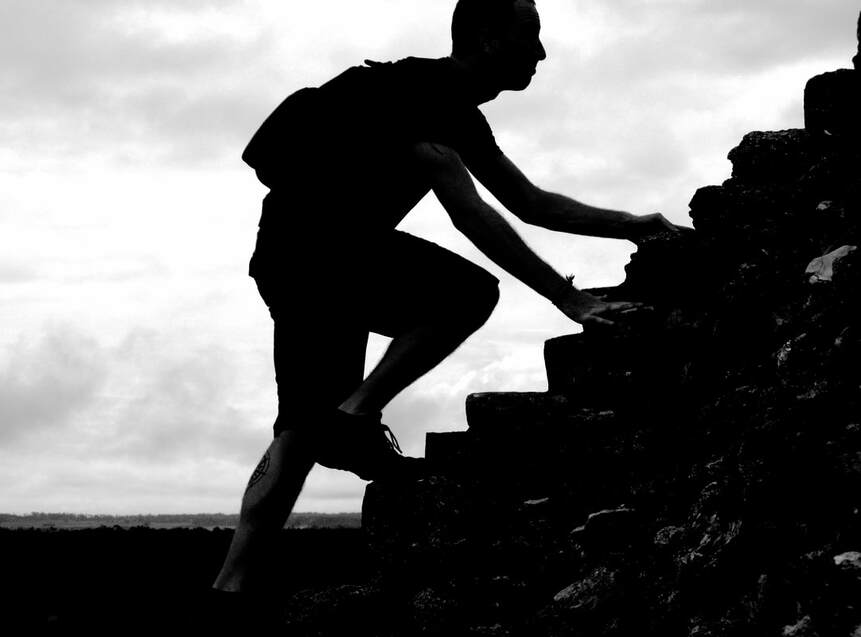
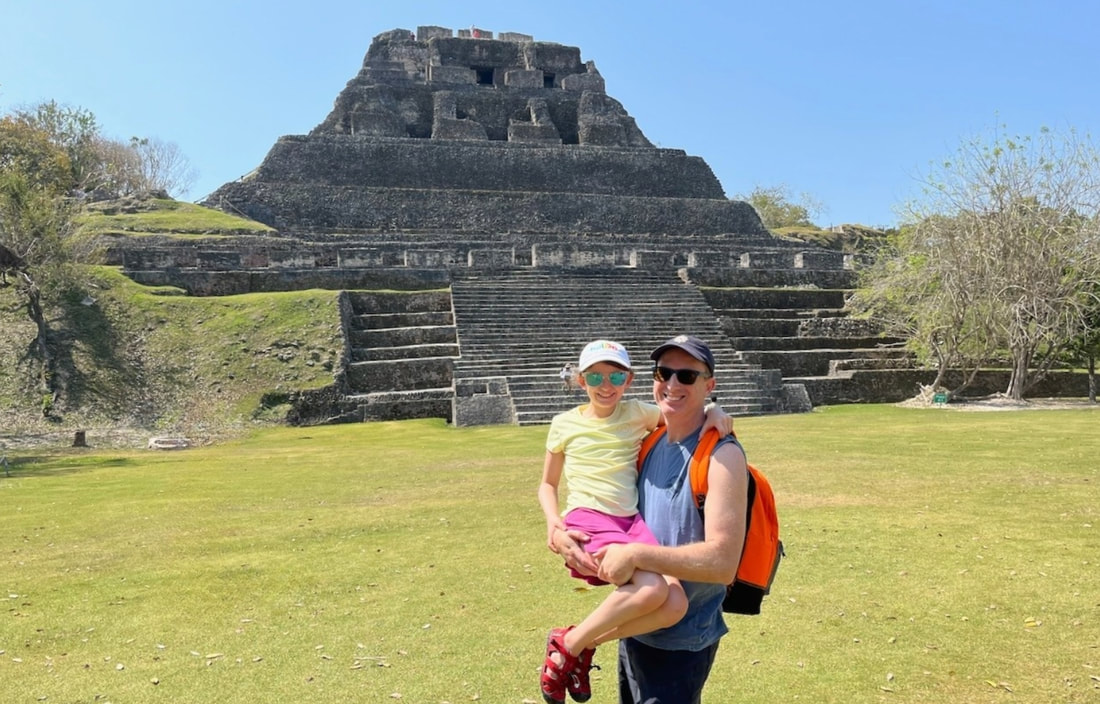
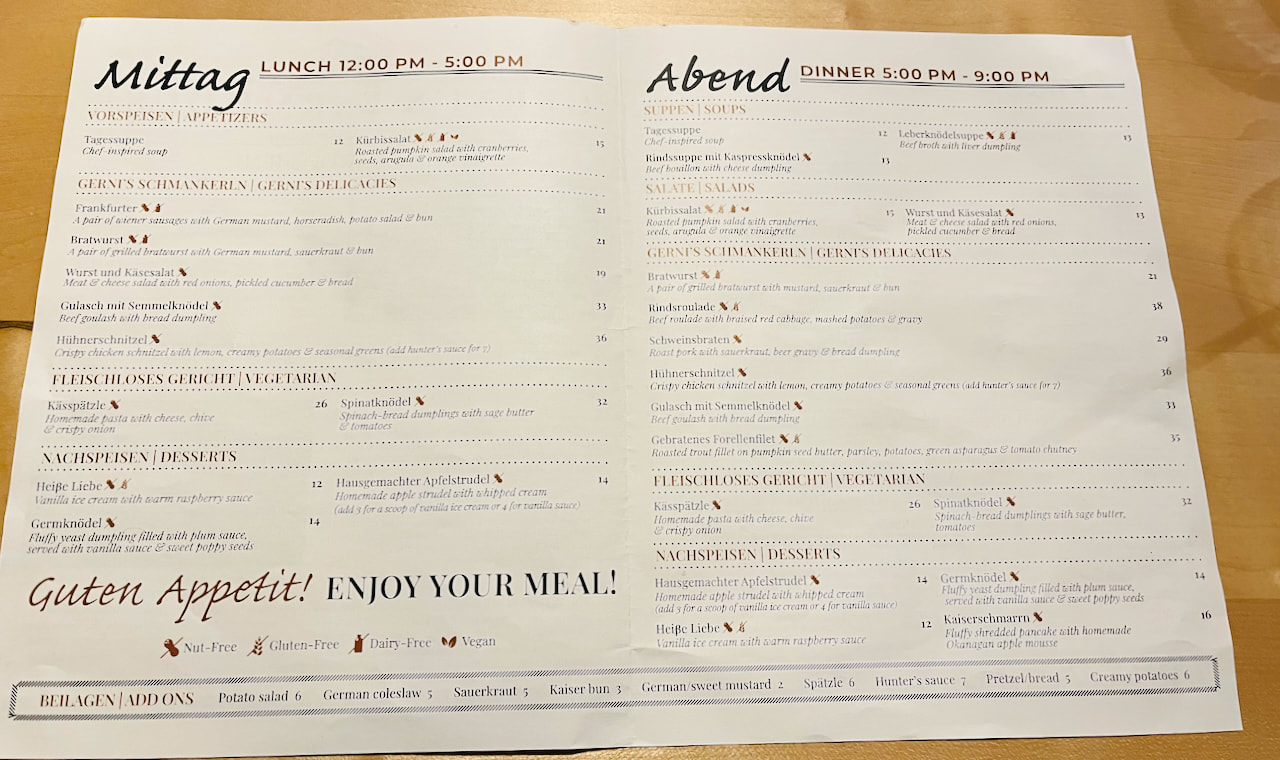
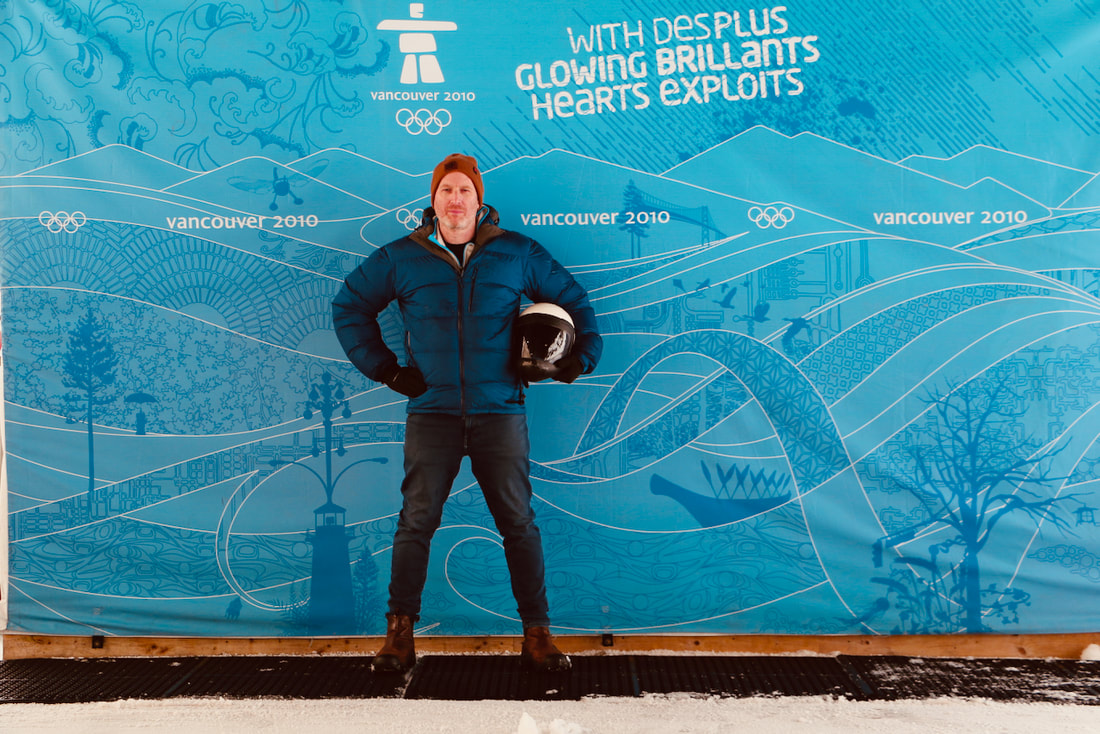
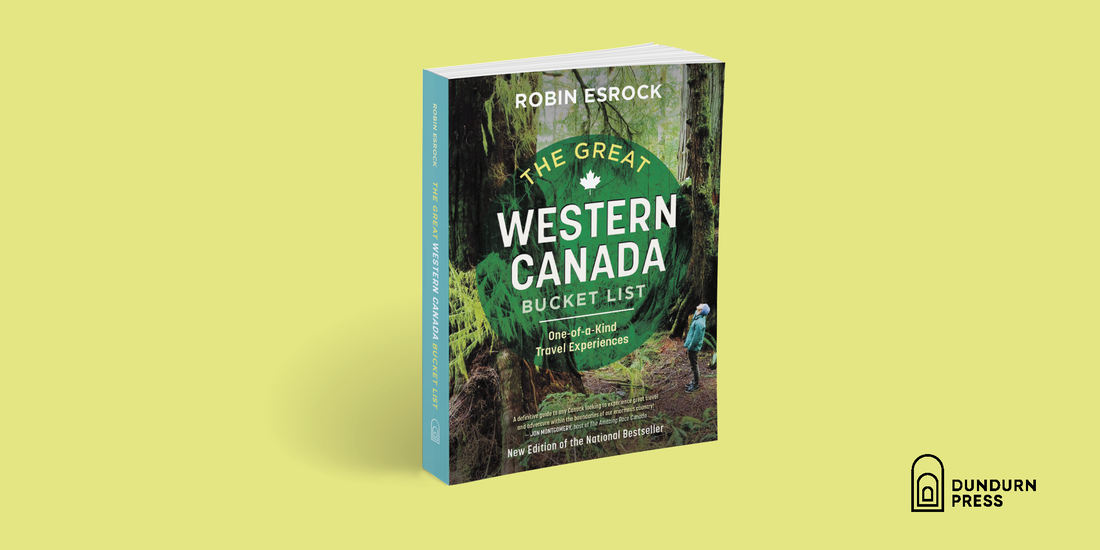
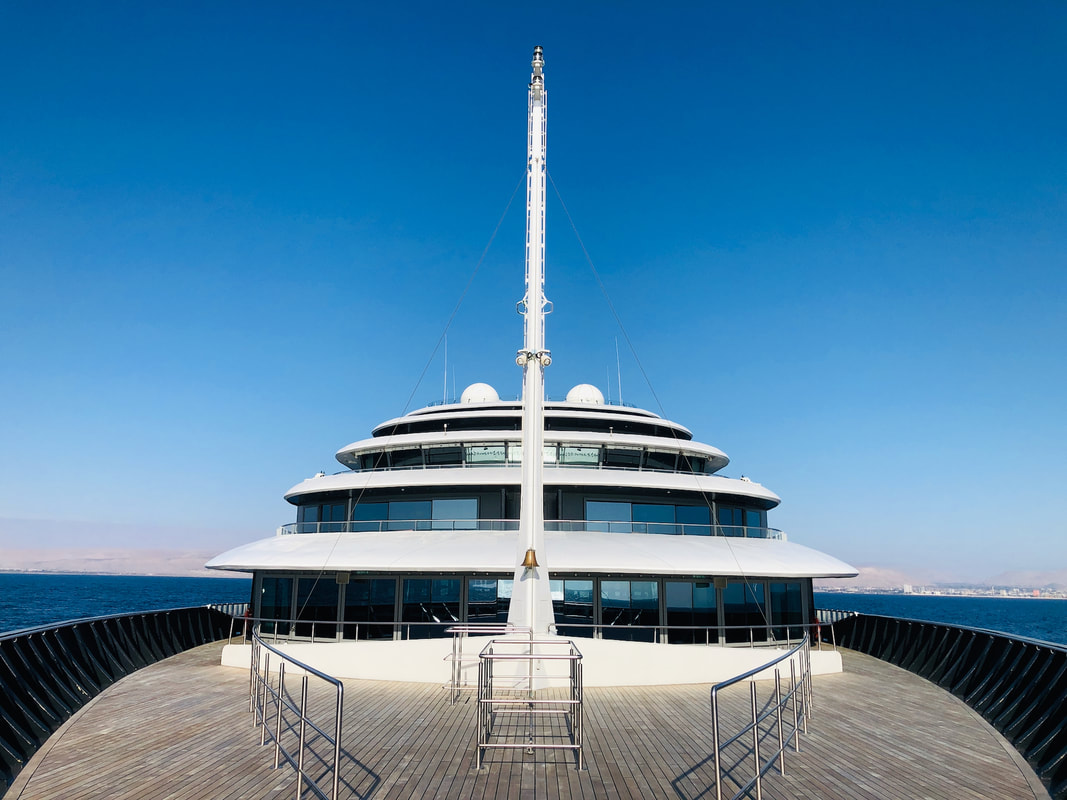
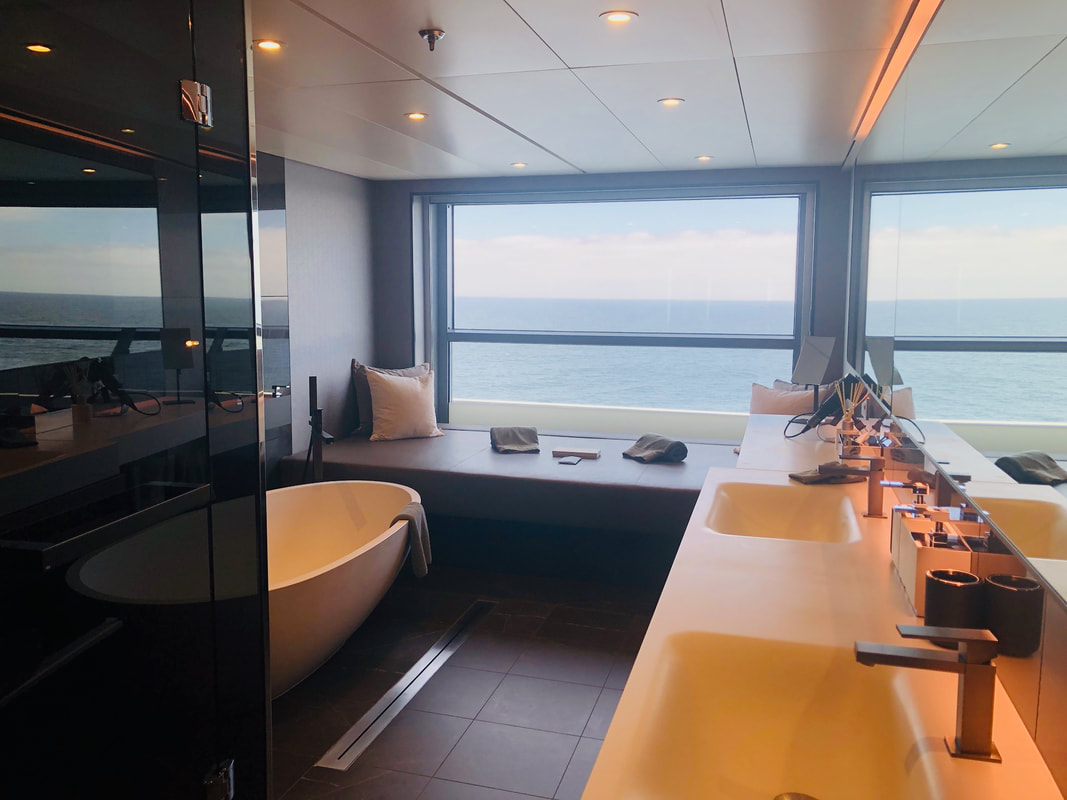
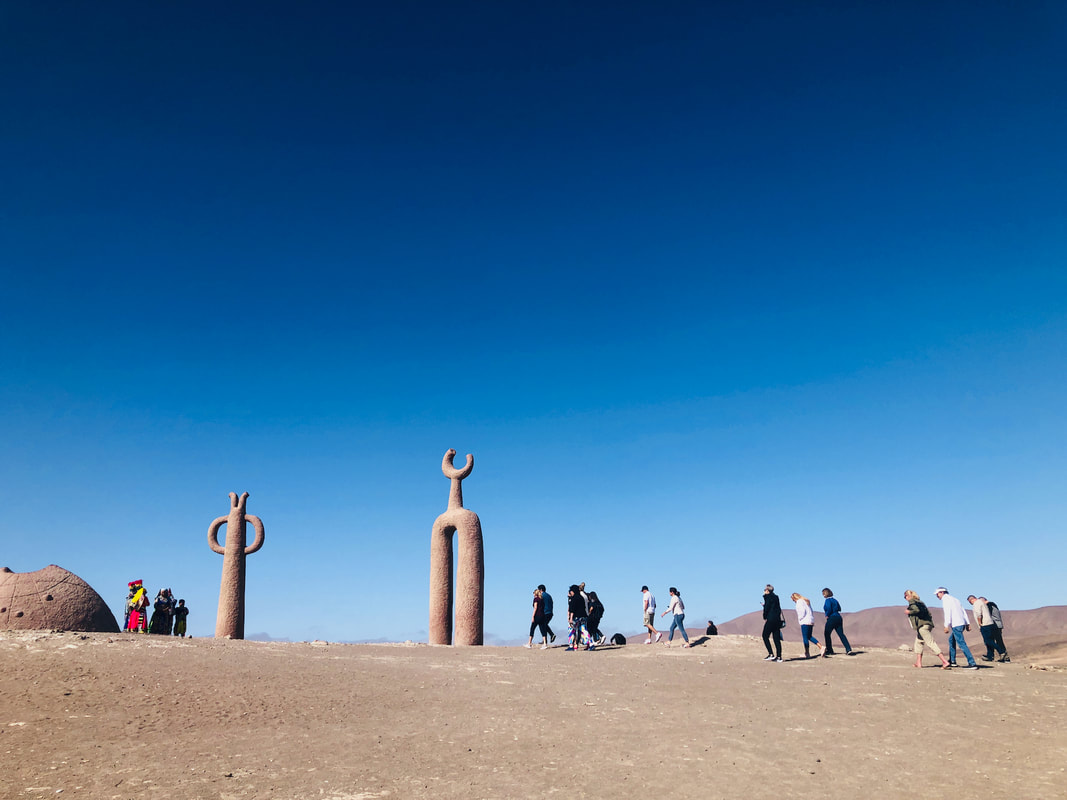
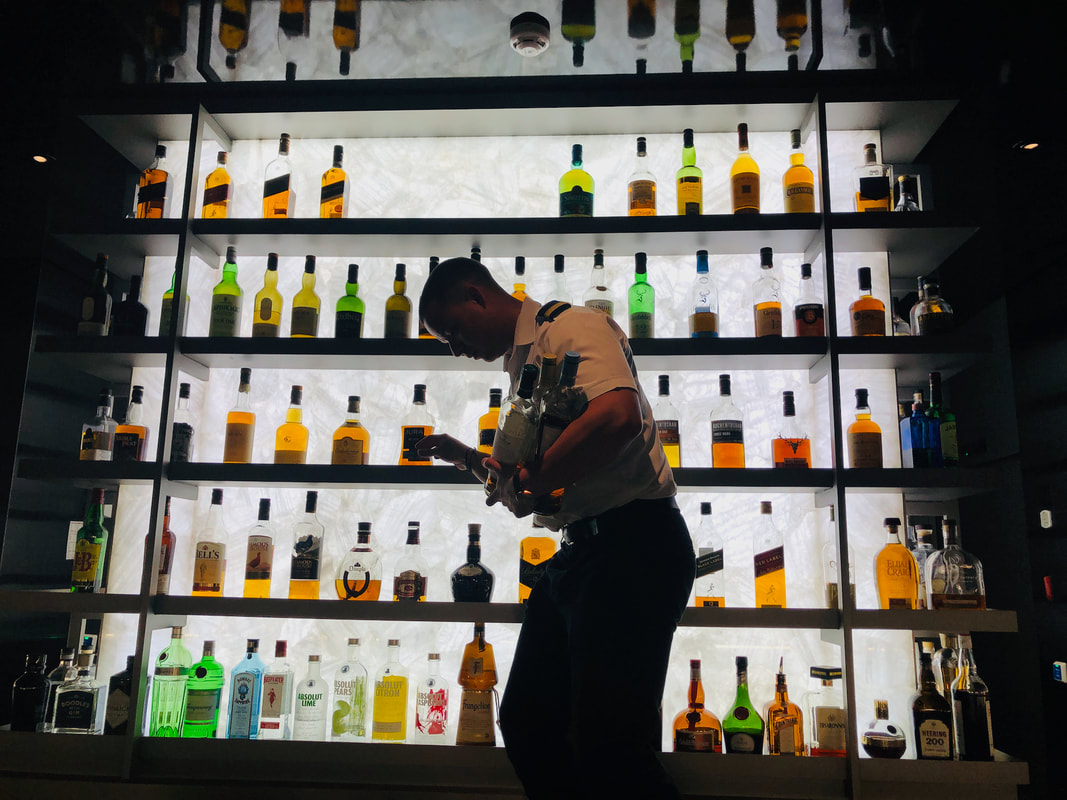
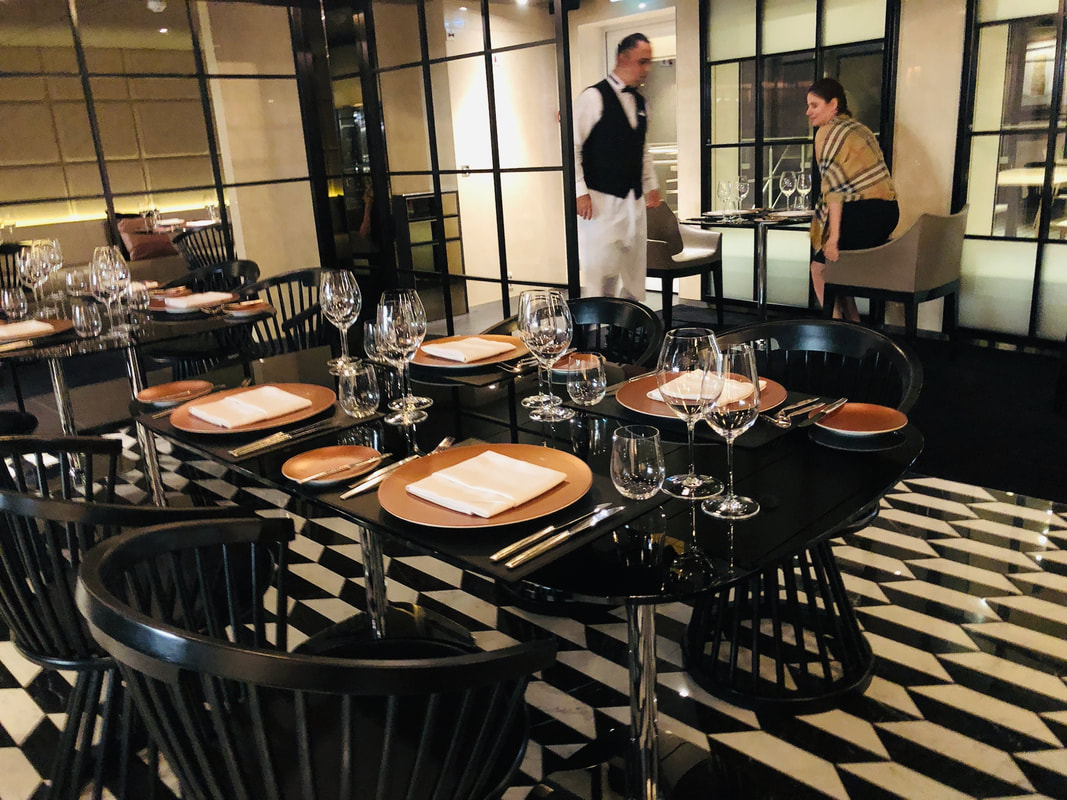
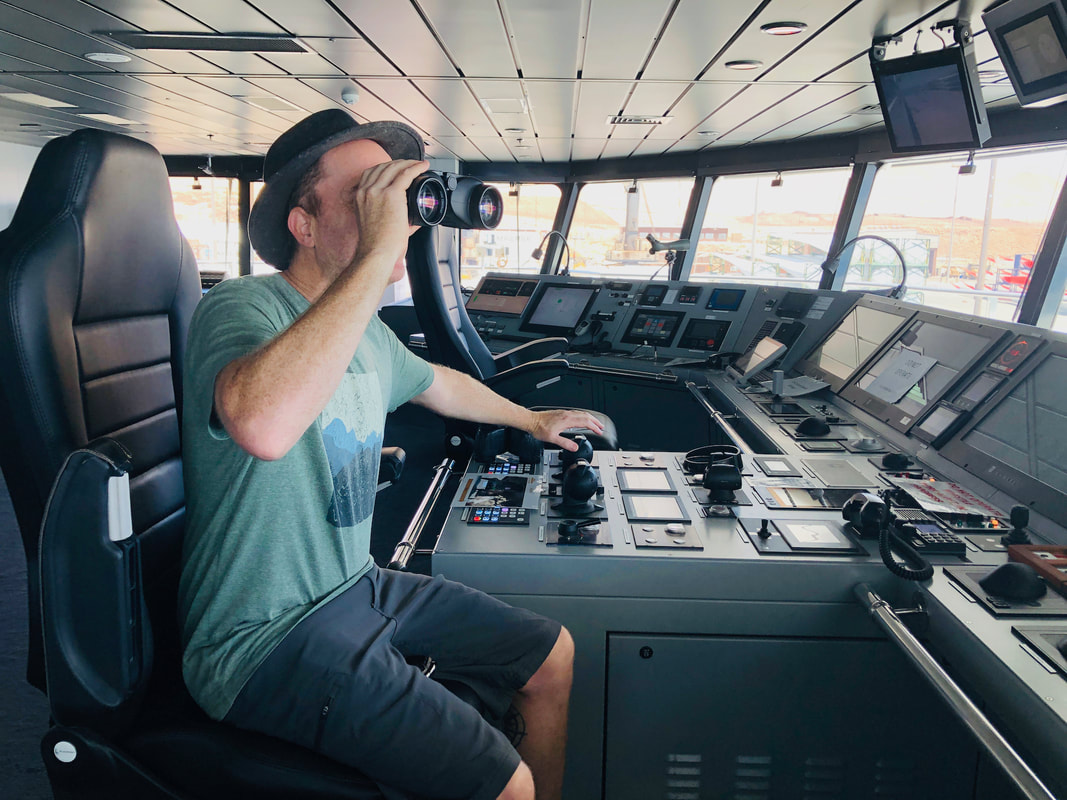
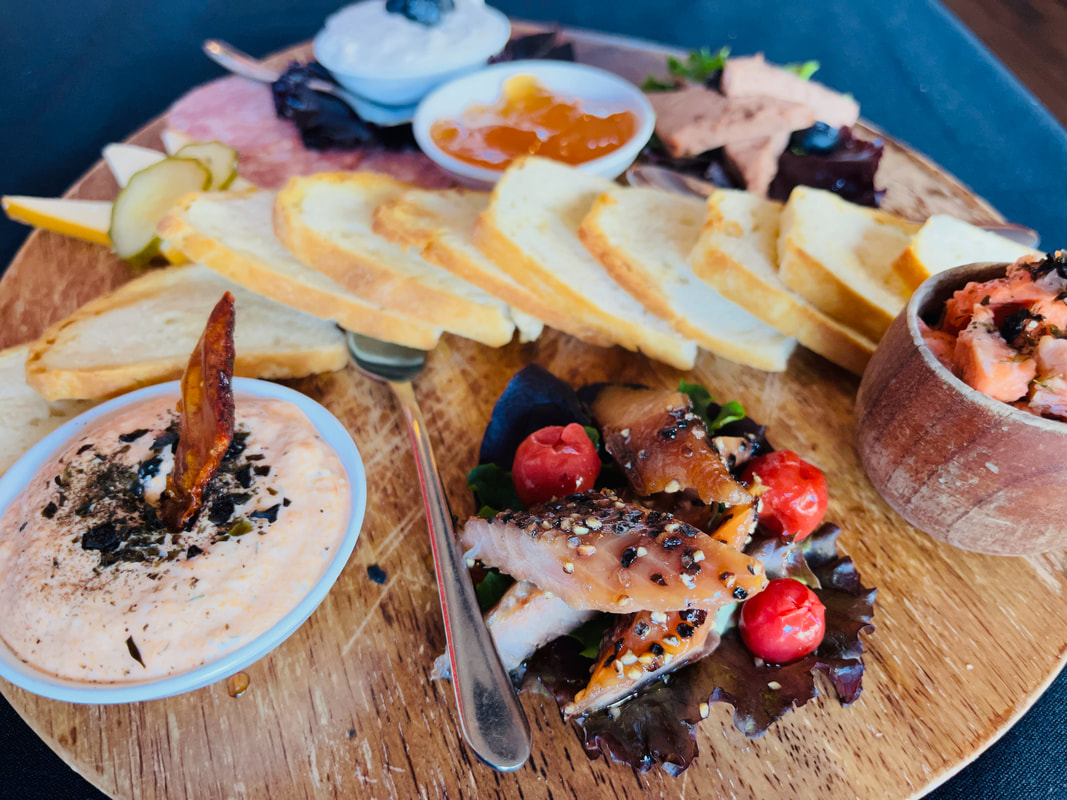
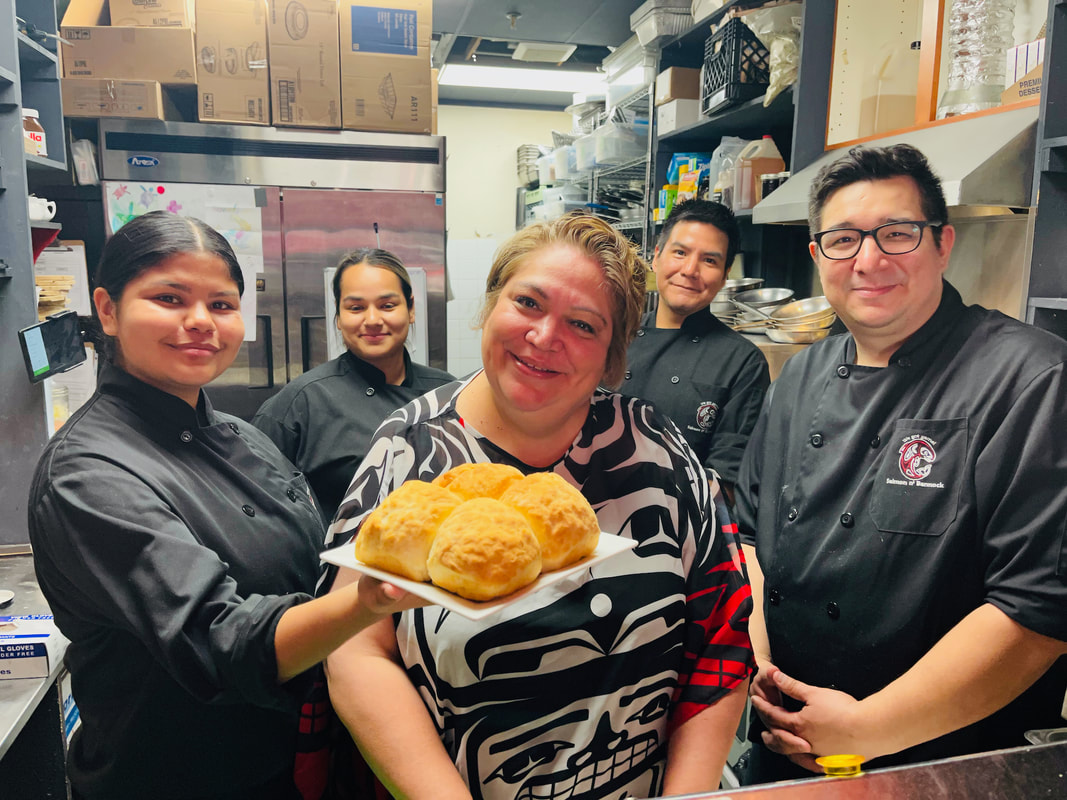
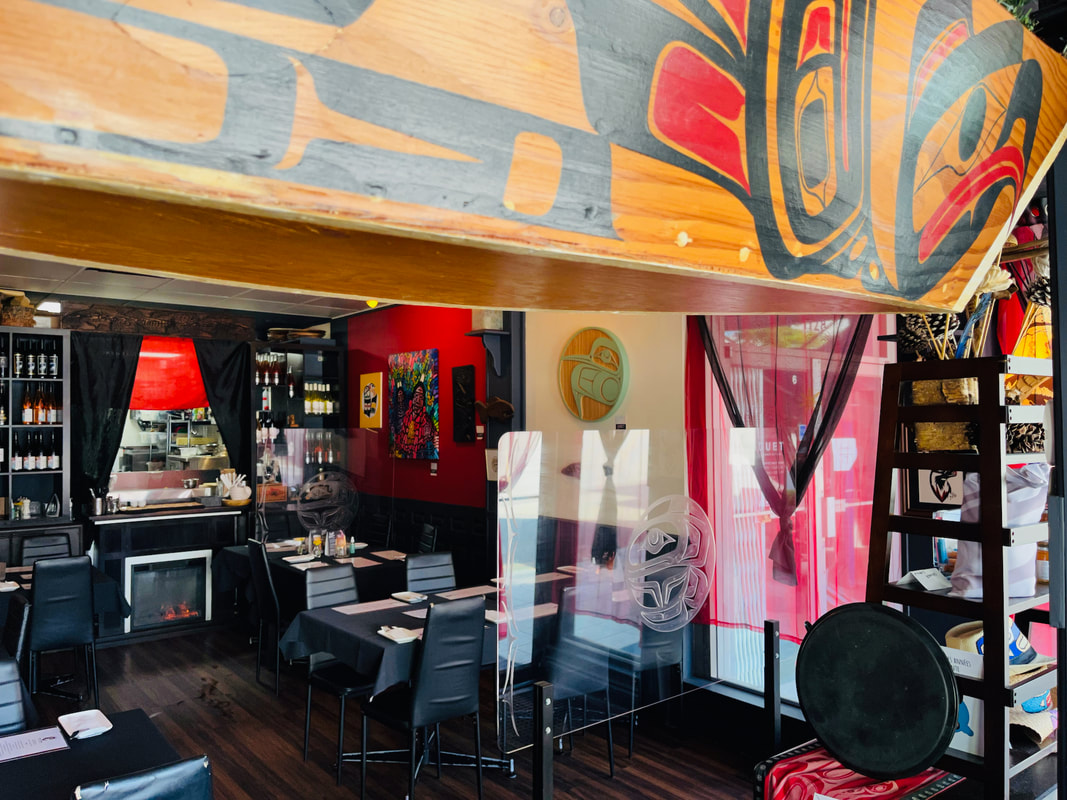
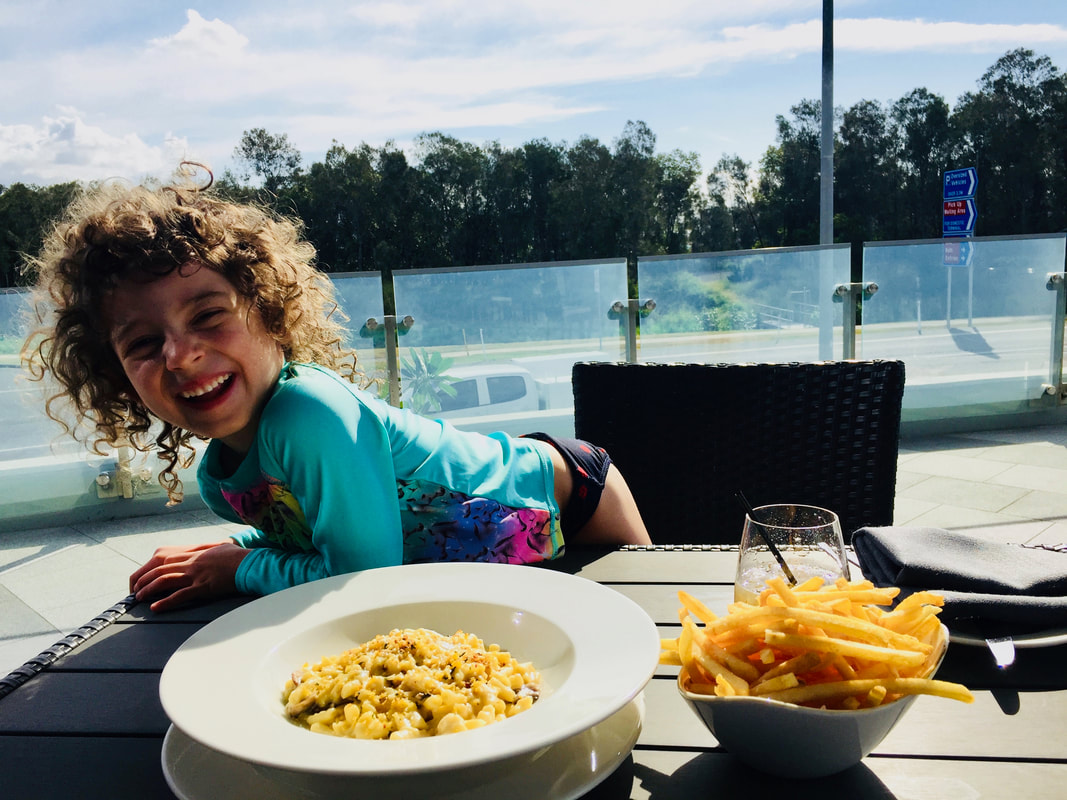
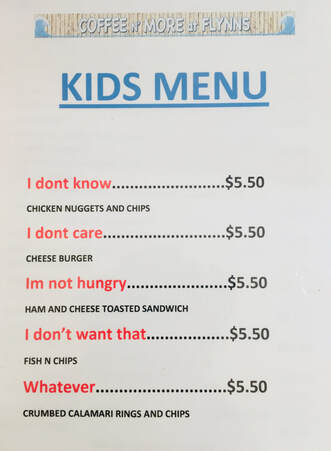
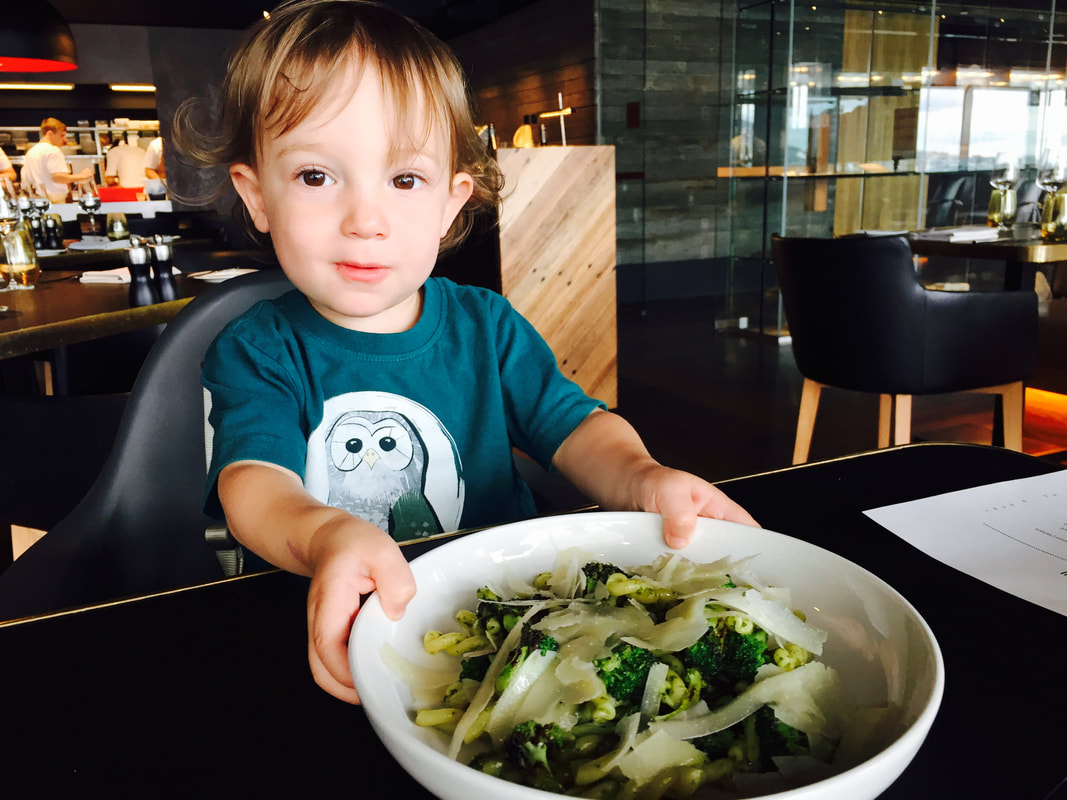
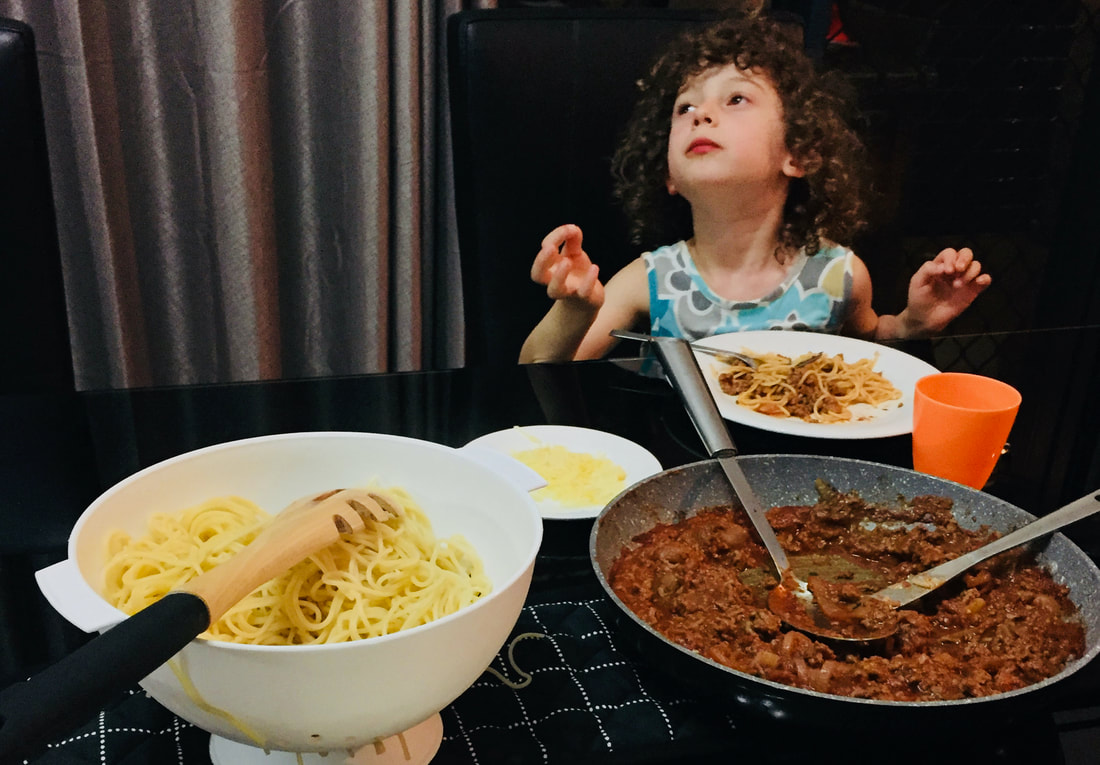

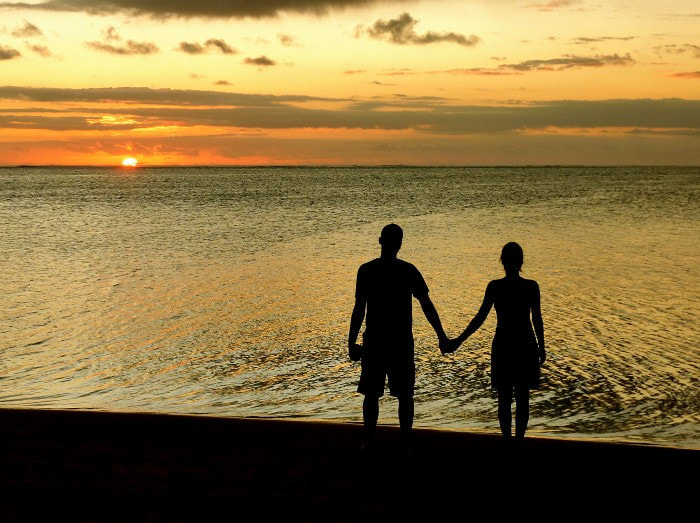
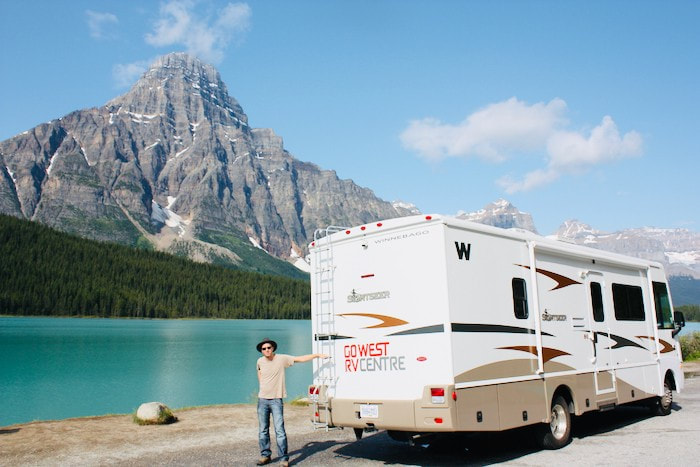
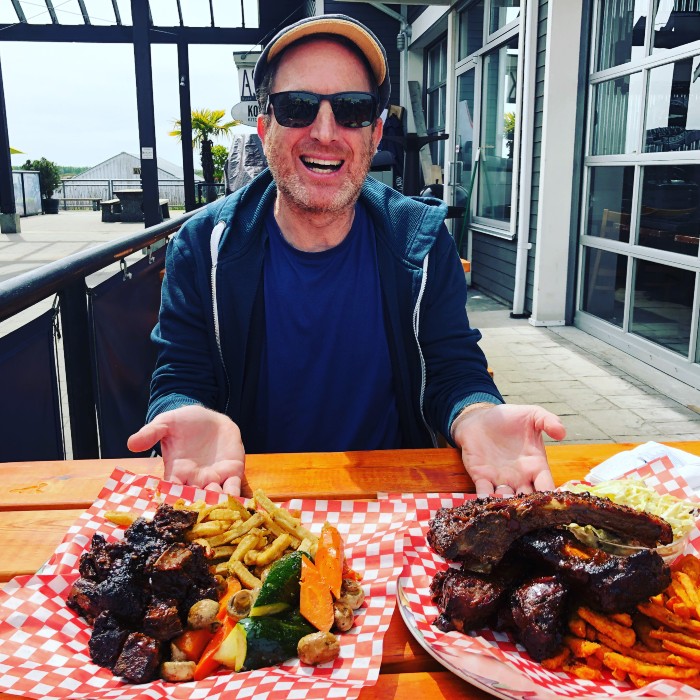
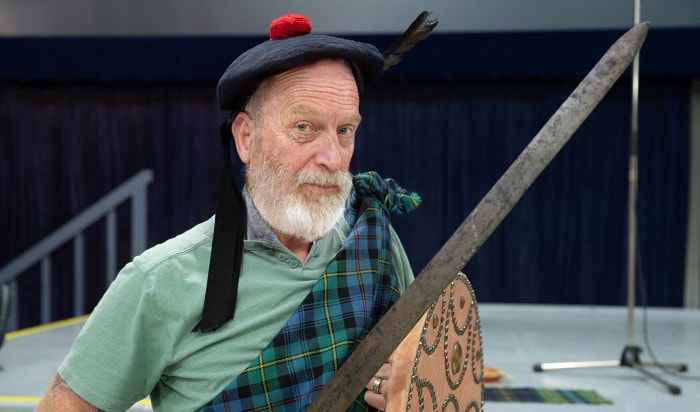
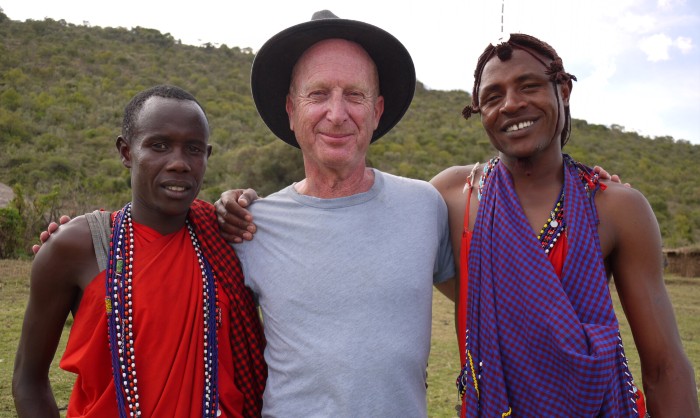
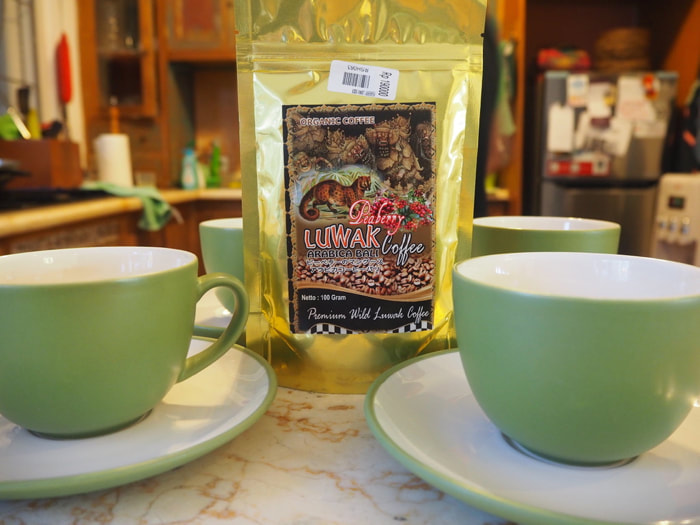
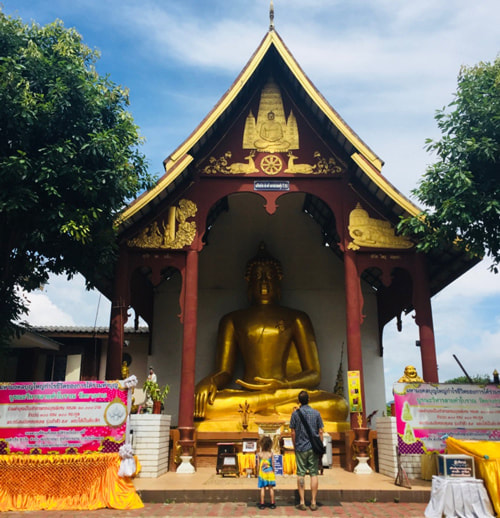
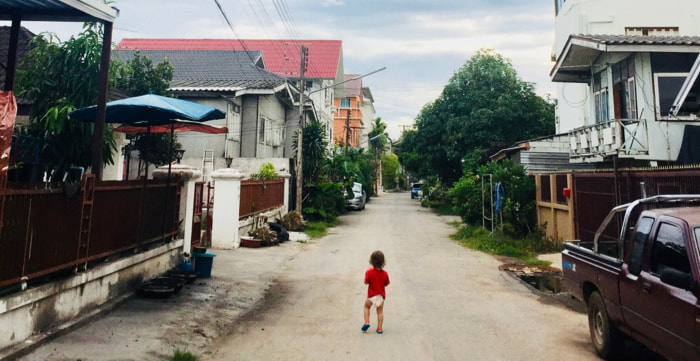
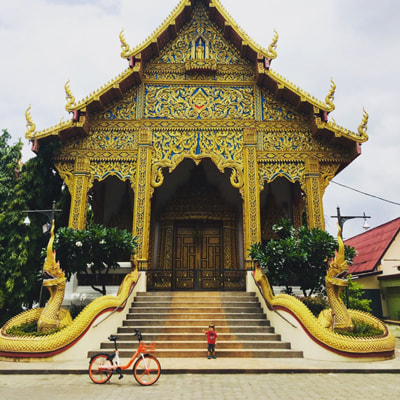
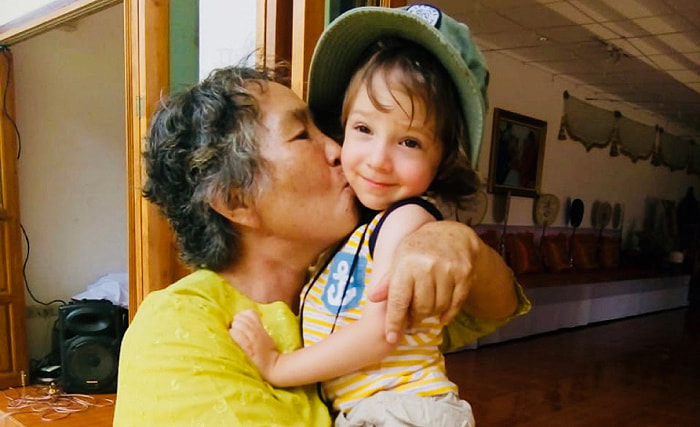
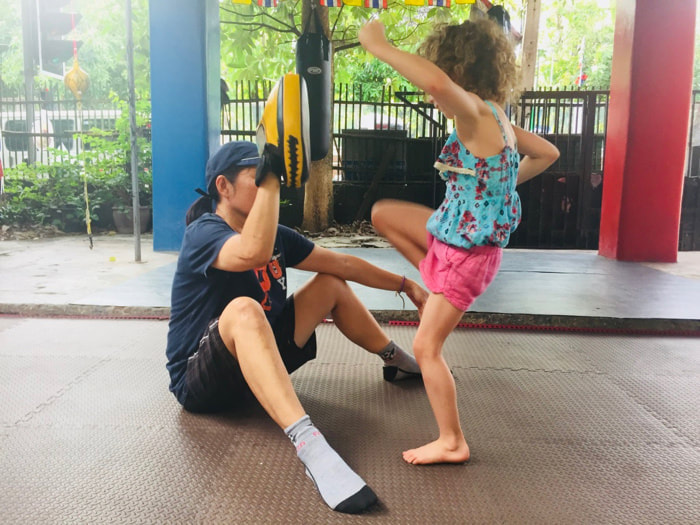
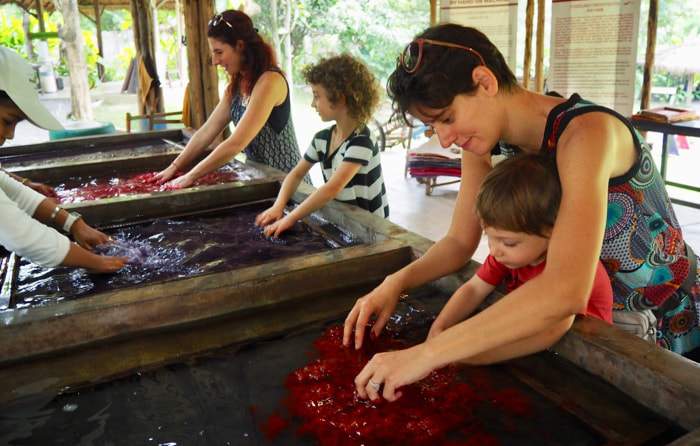

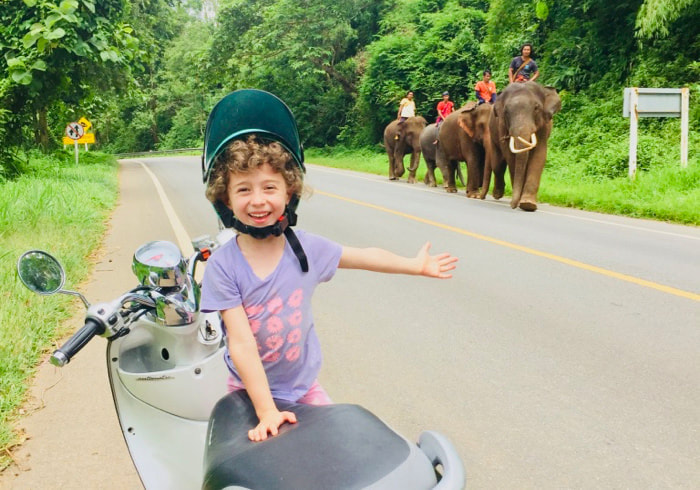
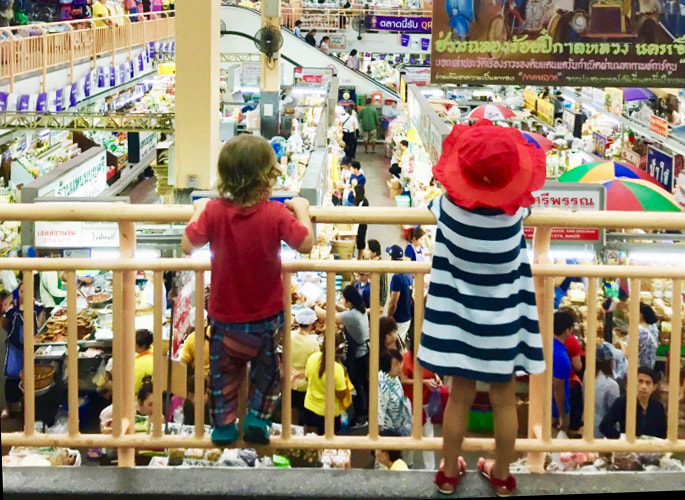
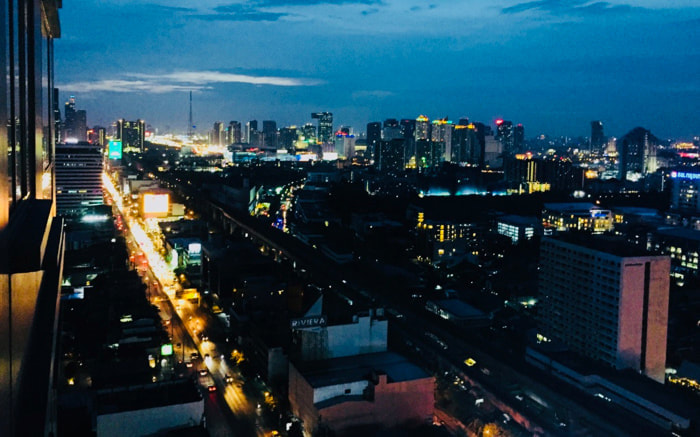
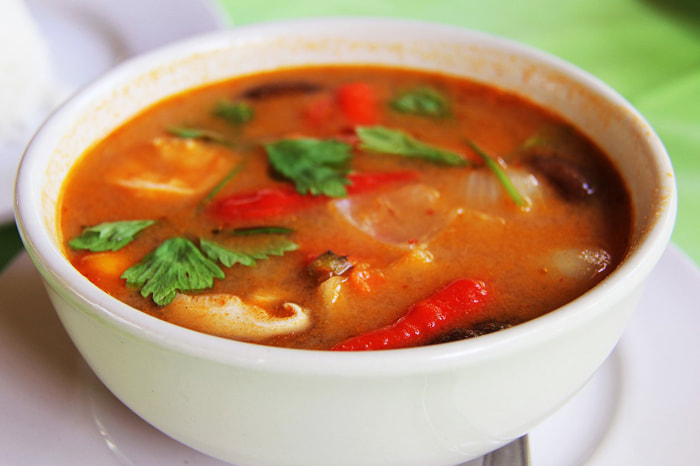
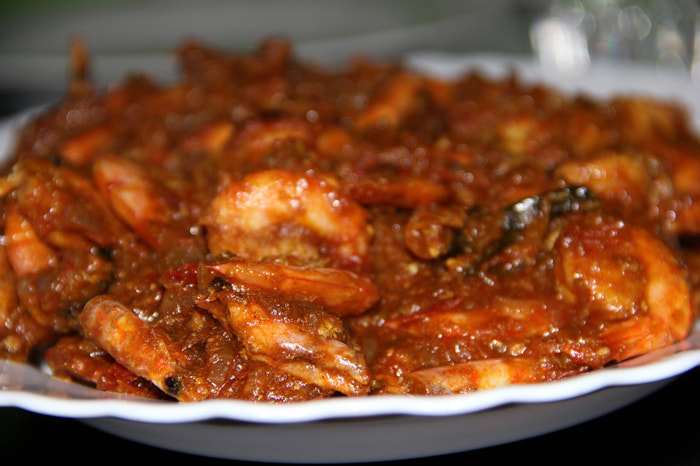
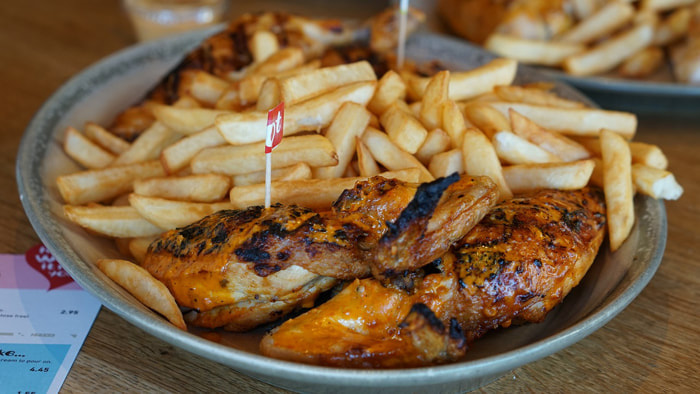
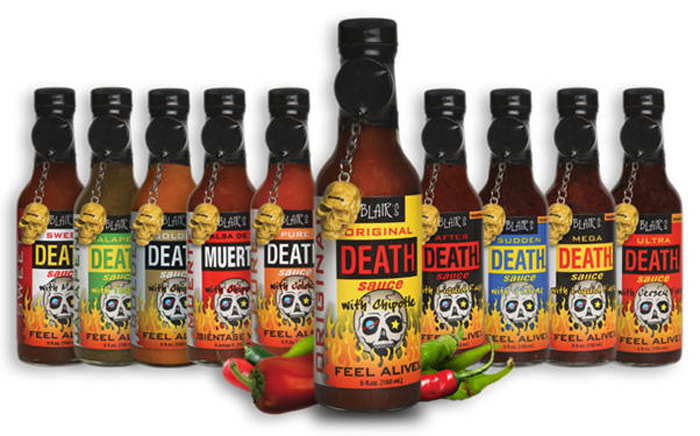
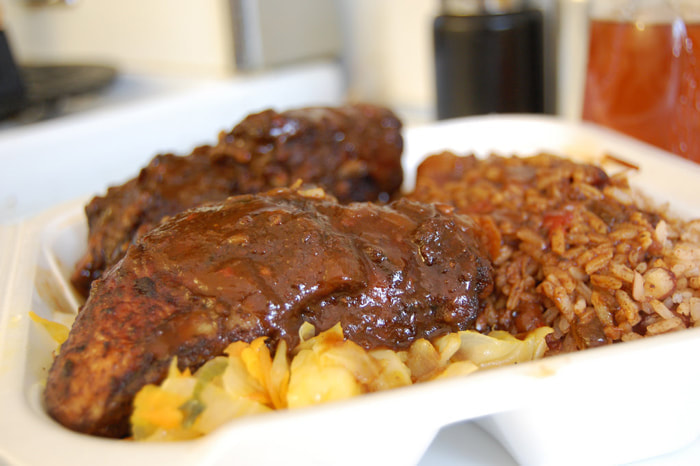
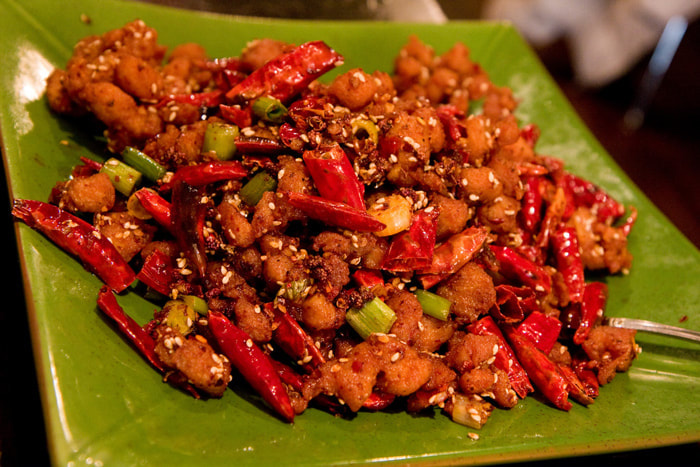
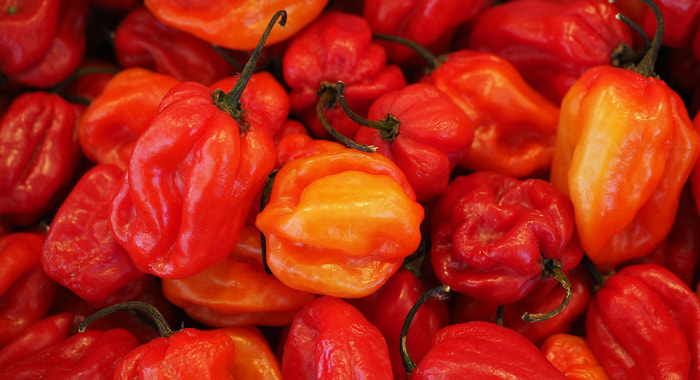
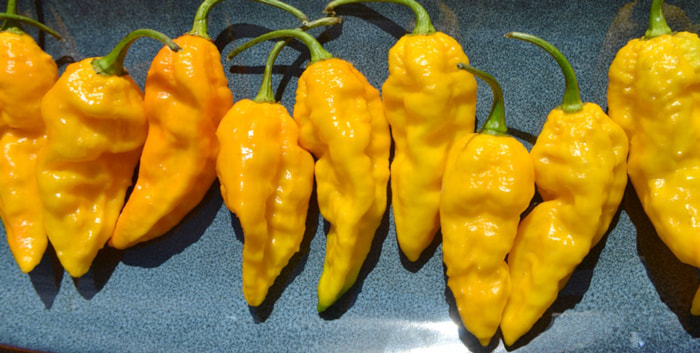
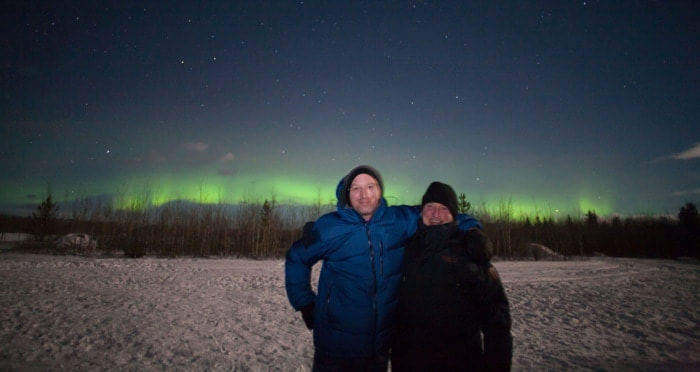
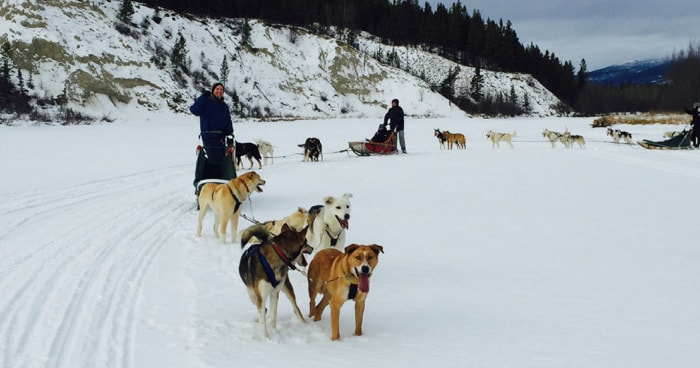
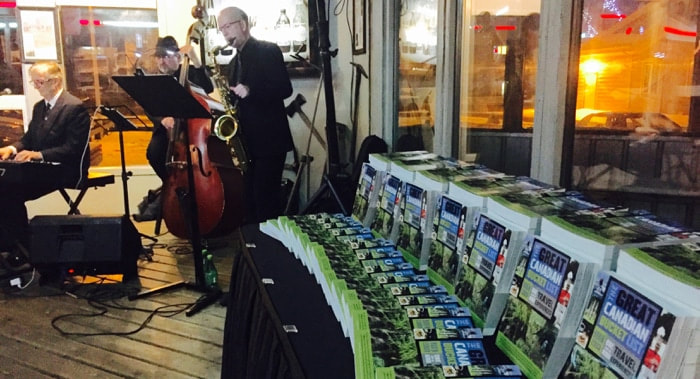


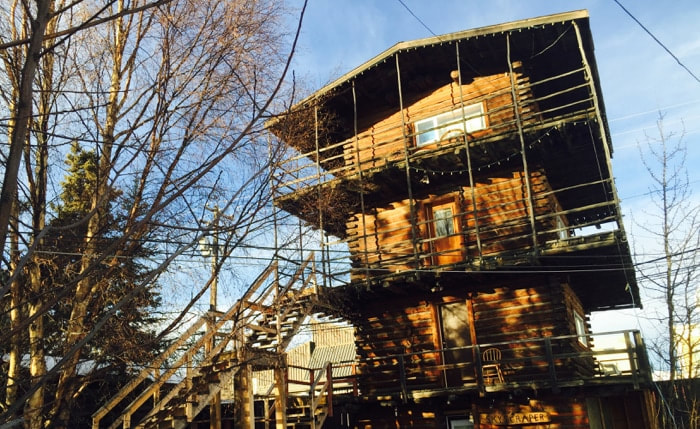
 RSS Feed
RSS Feed

